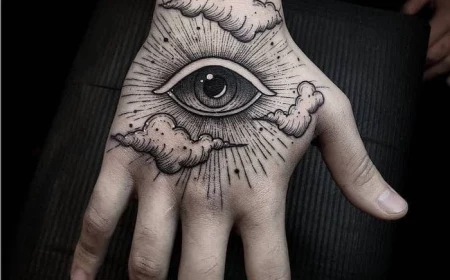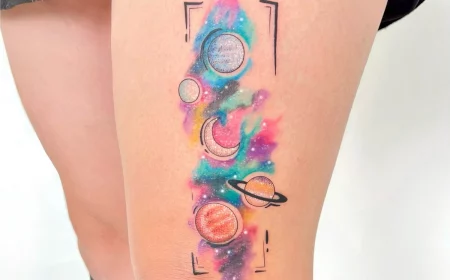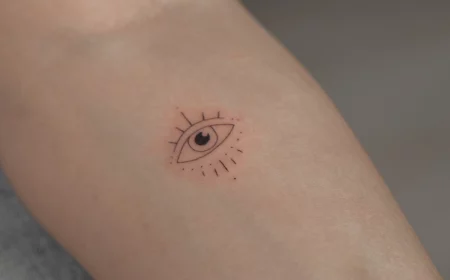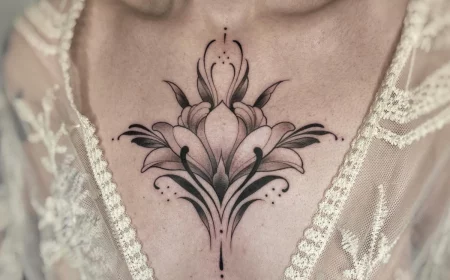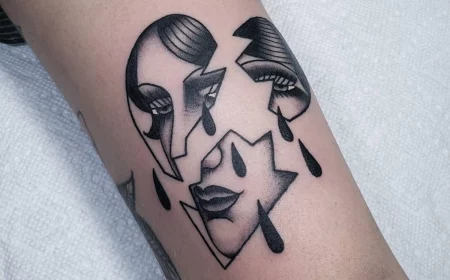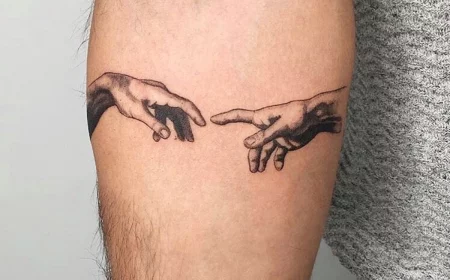Thinking About a Roman Numeral Tattoo? Read This First.
In all my years slinging ink, I’ve seen countless tattoo trends come and go. But some designs just stick around, and for good reason. Roman numeral tattoos are one of those classics. Honestly, I’ve probably tattooed hundreds of them, and each one tells a story—a birthdate, an anniversary, a day of sobriety, or a tribute to someone special. They’re simple, elegant, and packed with personal meaning.
In this article
- So, What’s the Big Deal with Roman Numerals Anyway?
- The Game Plan: Planning Your Tattoo for the Long Haul
- Placement, Pain, and Price: Putting It on Your Body
- The Tattoo Process: From First Chat to Finished Art
- Healing and Aftercare: Protecting Your Investment
- A Final Thought from the Chair
- Inspiration Gallery
But I’m writing this because I’ve also seen them go wrong. I’m talking about miscalculated dates, bad placement that makes the numbers look wonky, and delicate lines that turn into a blurry mess after a few years. A tattoo this important deserves to be perfect. So, let’s have the chat we’d have in my studio, long before a needle ever gets near your skin. We’ll get into styles, placement, and what to look for in an artist so you can get it right the first time.
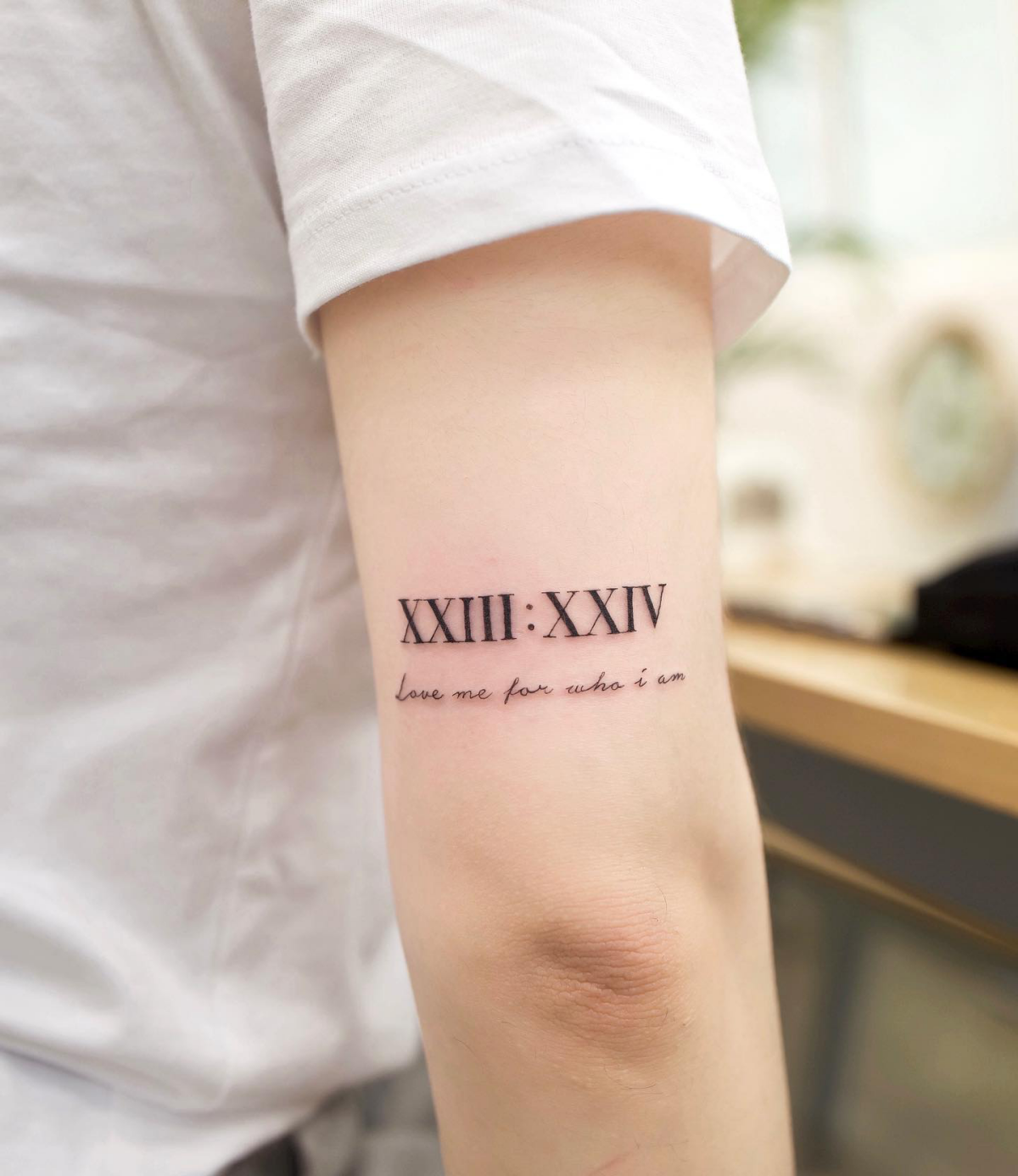
So, What’s the Big Deal with Roman Numerals Anyway?
Ever wonder why people are so drawn to these old-school numbers? It goes deeper than just looking cool or historical. There’s a certain architectural vibe to them. The strong, straight lines of I, V, and X feel structured and permanent, totally different from the soft curves of our everyday numbers (1, 2, 3). Think about it—they were designed to be carved into stone monuments. That feeling of permanence is exactly what translates into a tattoo.
When you get a date in Roman numerals, you’re tapping into that feeling. It doesn’t look like a temporary tag; it feels like a declaration carved in stone. Your brain sees the shapes first and the numbers second, giving it a graphic quality that’s both strong and understated. It’s a quiet statement, which is probably why it has such timeless appeal.
The Game Plan: Planning Your Tattoo for the Long Haul
Seriously, the most important part of getting a great Roman numeral tattoo happens before you even book an appointment. Rushing this stage is the fast track to regret. A good artist will always help you out, but coming in prepared makes everything smoother and ensures you walk away thrilled.
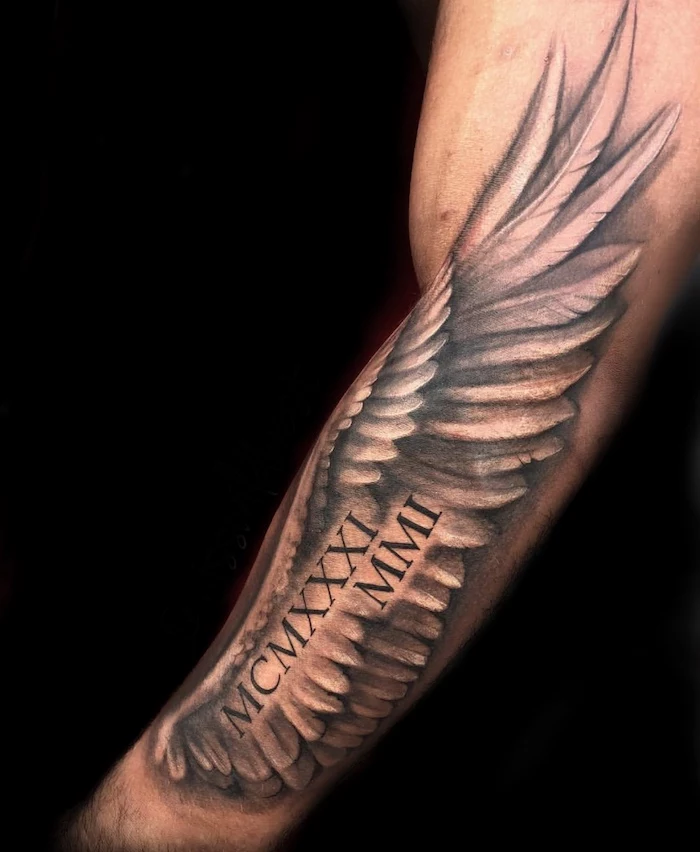
The #1 Most Important Step: Get The Date Right
This sounds like a no-brainer, but it’s the most common and heartbreaking mistake I see. A client will come in, 100% sure about the date they’ve scribbled down, only to realize months later that it’s wrong. And let me tell you, fixing a Roman numeral tattoo is a nightmare. The lines are too precise. Covering it up usually means going for something much bigger and darker. I once had a client come to me with a botched date on his arm; we ended up having to design a large blackwork rose to hide the mistake. He loved the new piece, but it wasn’t what he originally wanted and cost him three times as much as the first tattoo.
Heads up: Do NOT trust the first online converter you find. I tell every single client this. Use at least three different sources to translate your date. Better yet, look up the actual rules on an educational site, like a university’s classics department page. The goal is to understand why MCMXCVIII is 1998, not just to copy-paste. Check them against each other, write it down, and then stare at it for a few days. Getting it right is 100% your responsibility, and it will save you a world of pain (and money) later.
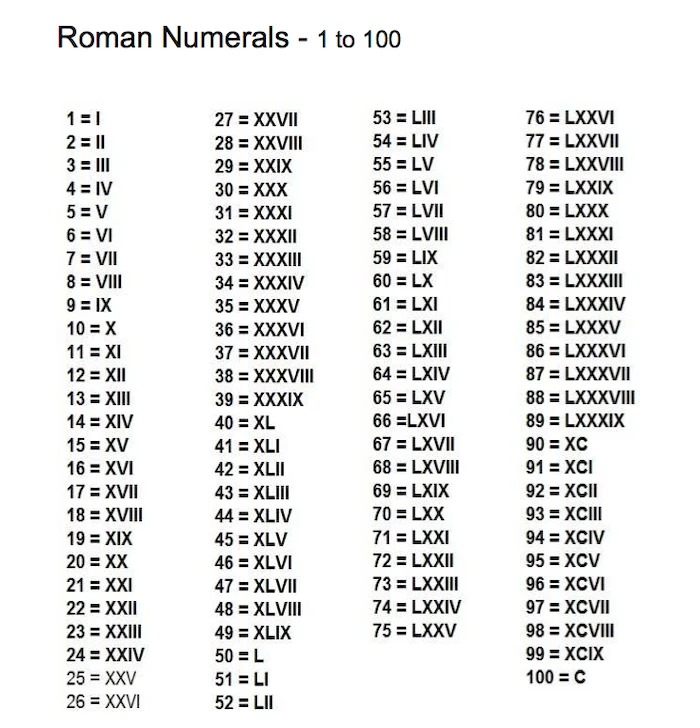
Choosing a Style: It’s More Than Just a Font
The style you choose sets the entire mood. This isn’t just about picking a font; it’s about legibility and how the tattoo will look when you’re 20 years older. Here’s the lowdown on the main options:
- The Classic Serif Look: These are the numerals with the little “feet” at the ends of the lines, kind of like a Times New Roman font. It gives off a very traditional, formal, and scholarly vibe that connects directly to those ancient stone carvings. From an artist’s perspective, this style ages beautifully because the serifs provide a solid anchor for the lines, keeping them crisp over time.
- The Modern Sans-Serif Vibe: Think clean, minimalist lines with no feet, like an Arial or Helvetica font. This style is super popular for its sleek and simple appearance. The catch? The lines have to be absolutely perfect. Any little waver or inconsistency from the artist is much more obvious without the serifs to mask it.
- The Delicate Fine-Line Style: This is a trendy look, often done with a single needle to create super thin, elegant lines. It’s great for smaller, subtle pieces. But you have to understand the risk. Fine-line tattoos are way more likely to fade or blur over time as your skin ages and regenerates. A line that’s razor-sharp today might look soft and fuzzy in a decade, especially if it’s in a spot that gets a lot of sun.
- The Bold Blackwork Approach: Using thick, saturated black lines creates a powerful, high-contrast tattoo that is built to last. Seriously, these things hold up incredibly well against sun and time. The main challenge here is spacing. If the numbers are too close, the bold lines can bleed together over the years and turn your clear date into an unreadable black bar. A good artist will know exactly how much skin to leave in between to keep it legible forever.
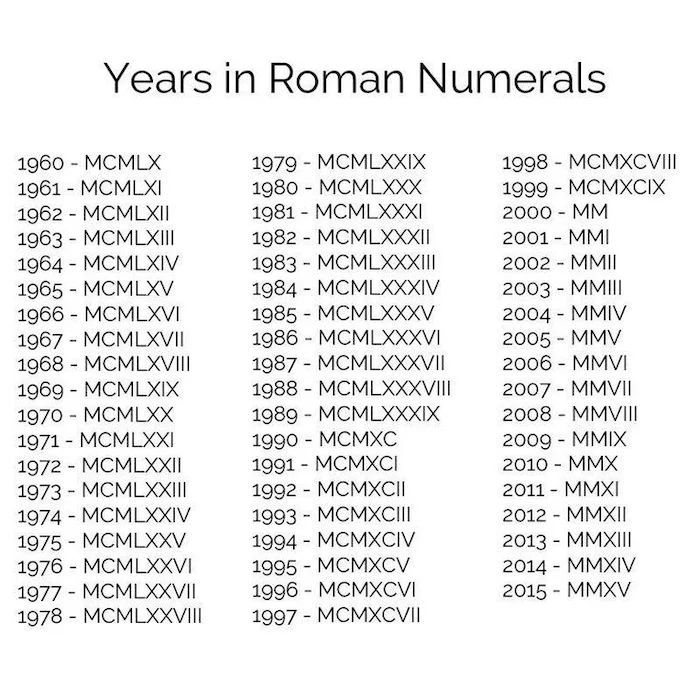
Placement, Pain, and Price: Putting It on Your Body
Okay, let’s talk about the big three: where it goes, how much it hurts, and what it’ll cost you. Your body isn’t a flat canvas; it’s full of curves and muscles. A straight line on a screen will bend and warp on skin, which is where a pro’s experience really counts.
First, the money talk. A small, simple Roman numeral tattoo is often going to fall into a shop’s minimum price category, which can be anywhere from $80 to $200 depending on the studio and city. For a straightforward forearm piece, you might be looking at $150 to $300. Something more complex, like a long date running perfectly down your spine, could easily be $400 or more. As for time, you’d be surprised. A simple date might only take 20-30 minutes of actual tattooing time, though the whole appointment with setup and placement will be longer.

Now, for placement and the pain that comes with it:
- The Forearm: A fantastic spot. It’s a relatively flat plane and easy to work on. Pain-wise? Most people rate it a 3 or 4 out of 10. It’s one of the more comfortable places to get tattooed.
- The Ribcage: A super popular and elegant spot, but be ready. This area is notoriously painful because the skin is thin right over the bone. We’re talking a solid 8/10 on the pain-o-meter for most folks. Plus, you have to breathe, which makes it a technical challenge for the artist.
- The Spine: Visually stunning, but one of the trickiest to pull off. There is zero room for error. If it isn’t perfectly centered, it’ll be obvious forever. Pain is usually high here, maybe a 7 or 8 out of 10. I only recommend this if you’ve found an artist who is an absolute master of linework.
- The Collarbone: Great for shorter dates. It’s a bony spot, which cranks the pain up to about a 7/10. The artist has to be careful to manage the machine’s vibration to keep the lines clean.
- Wrists & Behind the Ear: These are delicate areas, and my main warning is about “ink blowout.” This happens when the needle goes a tiny bit too deep in thin skin, and the ink spreads out underneath, creating a permanent blurry, bruised-looking halo around the lines. It’s a real risk, so find someone who specializes in micro-tattoos for these spots.
- A Quick Word on Hands & Fingers: I usually advise against these placements. The skin on your hands regenerates so fast and gets so much wear and tear that a crisp tattoo can look like a faded blob in a year or two. Many reputable artists will be hesitant to do them because they can’t guarantee the quality over time.
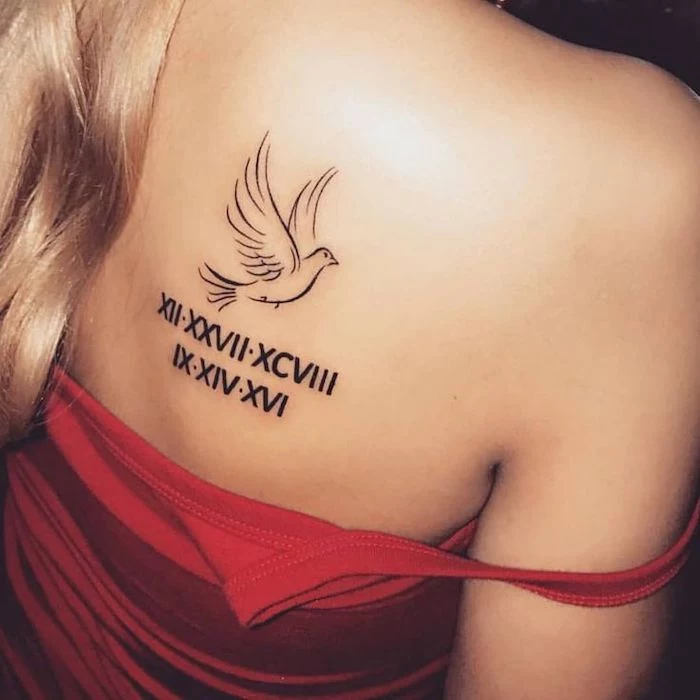
The Tattoo Process: From First Chat to Finished Art
Knowing what to expect can calm the nerves. A professional shop should be a clean, safe, and collaborative space.
Finding Your Artist (and Checking Their Work)
Don’t just walk into the first shop you see. Do your homework. Scour online portfolios. When you’re looking, here’s your checklist:
- Look for HEALED photos, not just fresh ones. A fresh tattoo always looks perfect; a healed one from a year ago tells the real story of the artist’s skill.
- Zoom in on the pictures. Are the lines actually straight and solid, or are they a bit wobbly? Is the ink packed in evenly?
- Check the spacing. For Roman numerals, is the negative space between the letters consistent? This is a huge sign of a careful hand.
A good consultation is a two-way street. The artist should listen to your story but also give you their professional opinion on what will work best. If they dismiss your concerns or pressure you, that’s a red flag. Walk away.

The Stencil: Your Final Checkpoint
Once the design is final, we’ll place a purple stencil of it on your skin. This is your last chance to get everything perfect. Look in the mirror. Move your arm around. Is the size right? Is the placement spot-on? Is it spelled correctly? Seriously, don’t be shy. I would rather move a stencil ten times than have someone unhappy for life. Once you give the okay, that’s where the ink goes.
Healing and Aftercare: Protecting Your Investment
Getting the tattoo is just the beginning. How you care for it over the next few weeks—and for years to come—is what makes it last.
The First Two Weeks are Critical
Your artist will give you specific instructions, so listen up! But generally, you’ll wash the tattoo gently 2-3 times a day with a mild, fragrance-free soap. Pat it dry with a paper towel (cloth towels can hold bacteria). Then, apply a very thin layer of a recommended lotion. Good to know: You can grab great, affordable options like Lubriderm, Cetaphil, or a tiny bit of Aquaphor at any pharmacy. The goal is to keep it lightly moisturized, not greasy.
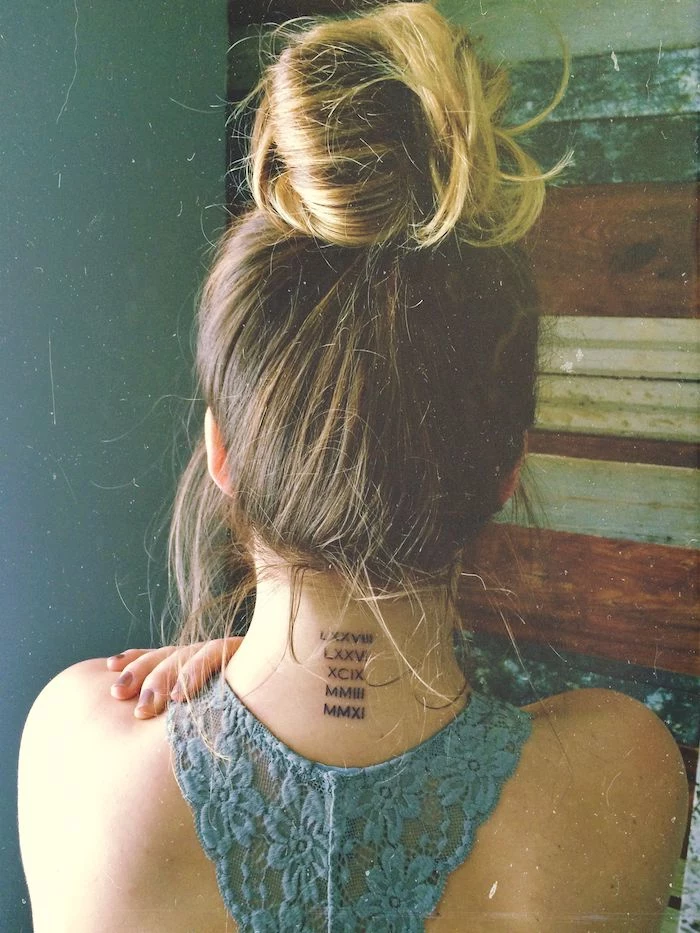
It’s going to itch and peel like a sunburn. Do. Not. Scratch. It. Picking at scabs can literally pull the ink out. Also, no soaking for at least two weeks—that means no baths, pools, or hot tubs, which can lead to nasty infections.
Your Tattoo’s Lifelong Enemy: The Sun
Once it’s healed, this is the single most important rule. UV rays from the sun are like a laser, slowly breaking down the ink in your skin. Sun exposure will turn a crisp, black tattoo into a faded, blurry mess over time. Make putting on a high-SPF sunscreen (SPF 30 or higher) a daily habit for your tattooed skin. It’s the best thing you can do to keep your art looking sharp for decades.
A Final Thought from the Chair
A Roman numeral tattoo is a beautiful bridge between history and your own personal story. When you approach it with respect—by triple-checking your date, finding a true pro, and taking care of the finished piece—you’re creating something truly timeless. So take your time, ask all the questions, and enjoy the process. A tattoo done with intention is something you’ll be proud of forever.
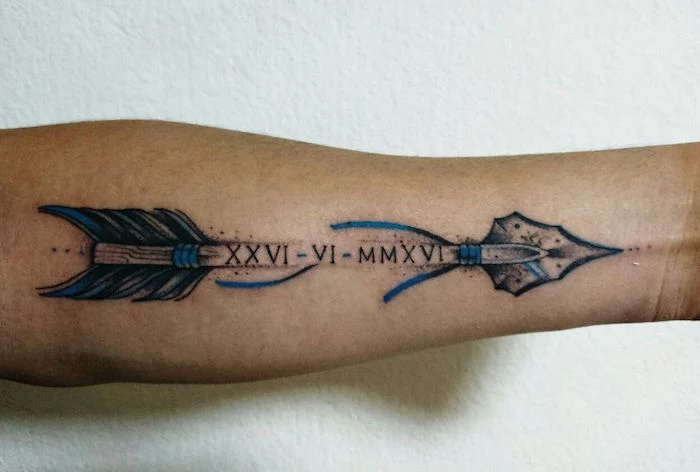
Inspiration Gallery
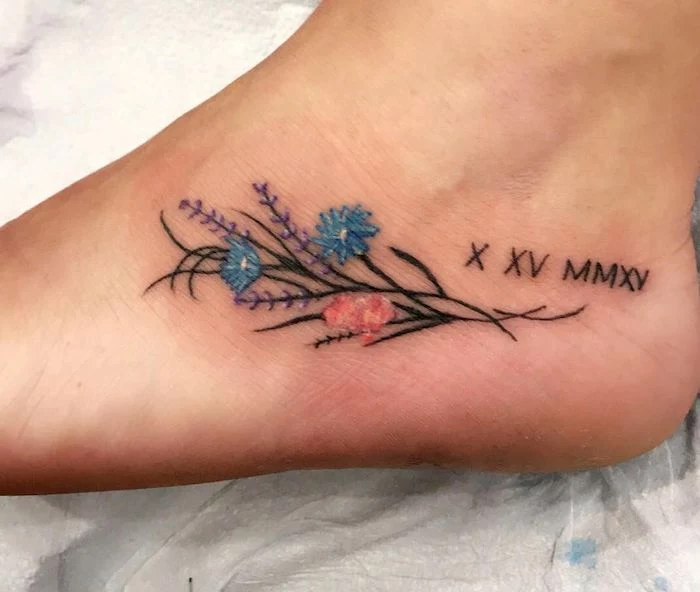
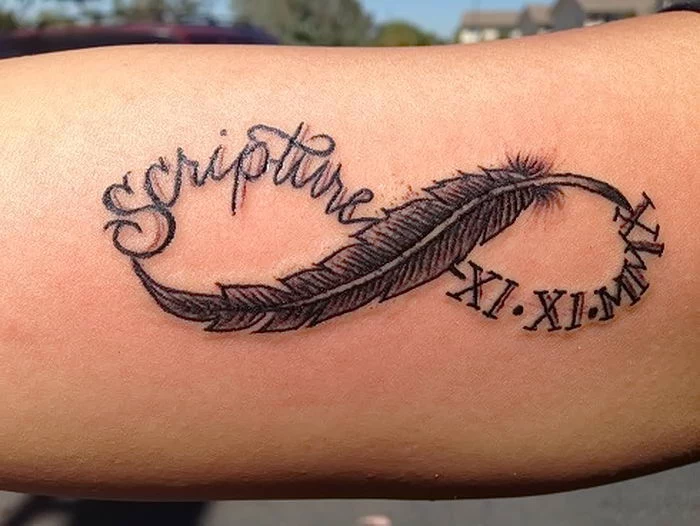

When vetting a tattoo artist for this style, their portfolio should show more than just pretty pictures. Look specifically for healed photos of fine-line work, not just fresh ones. This shows you how their lines settle into the skin over time. Check for consistency in line weight and spacing—are the I’s and V’s perfectly parallel and evenly spaced? A great artist for this job is a master of precision.
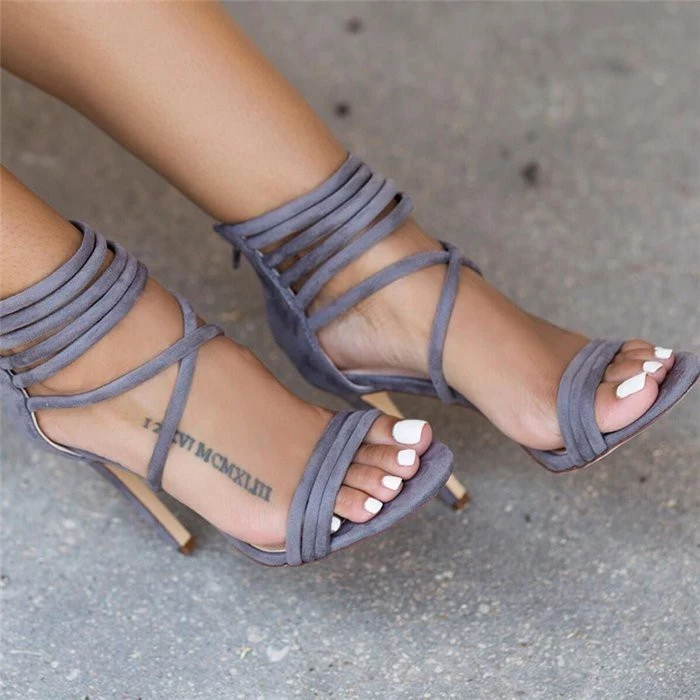
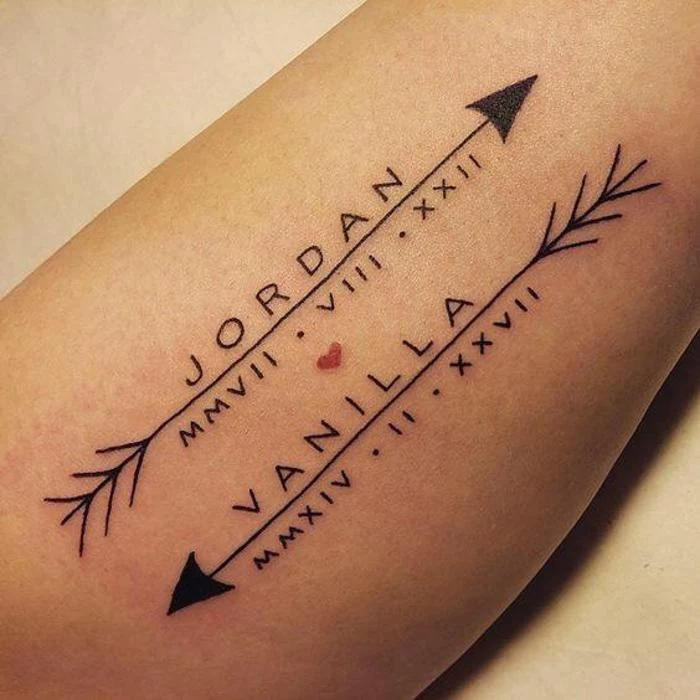
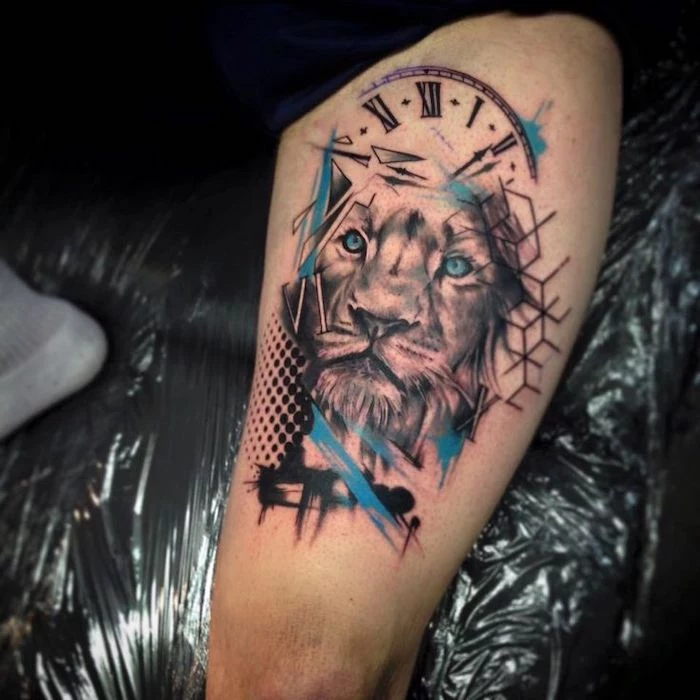
- Clarity at a distance
- A timeless, classic feel
- Less chance of blurring over the years
The secret? Choosing a slightly thicker, well-defined font. While delicate, whisper-thin lines are tempting, a font with a bit more substance will age much more gracefully, especially on areas that see a lot of sun or movement.
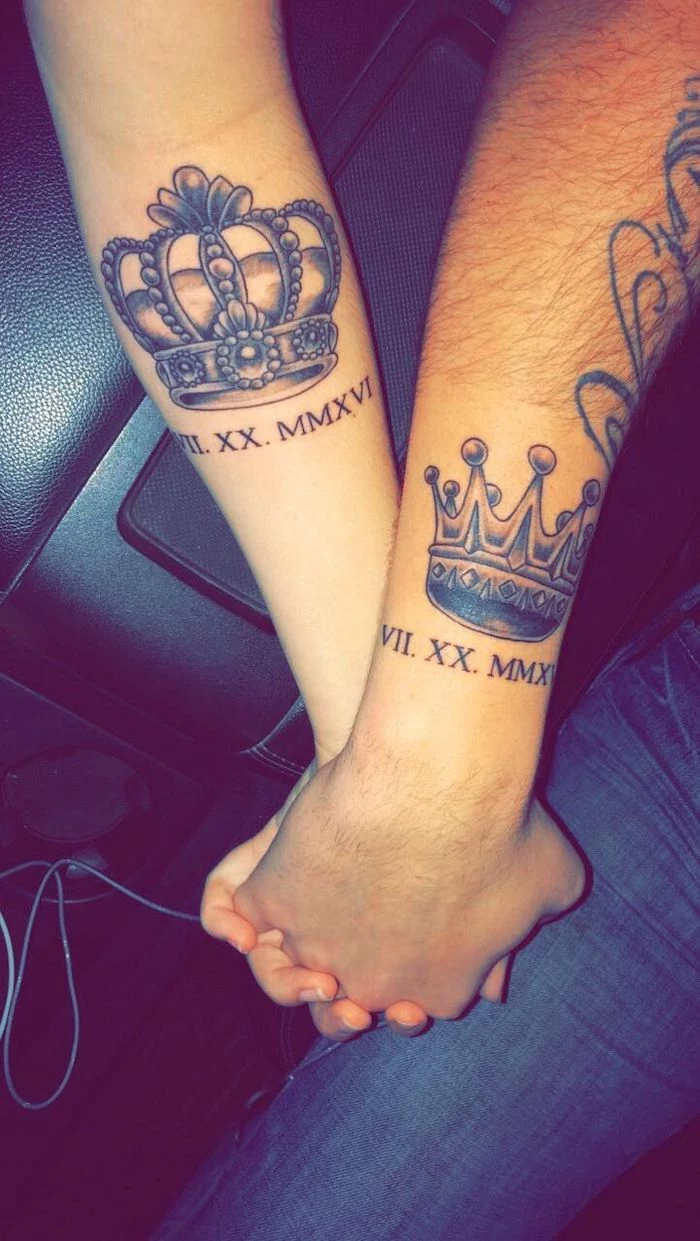
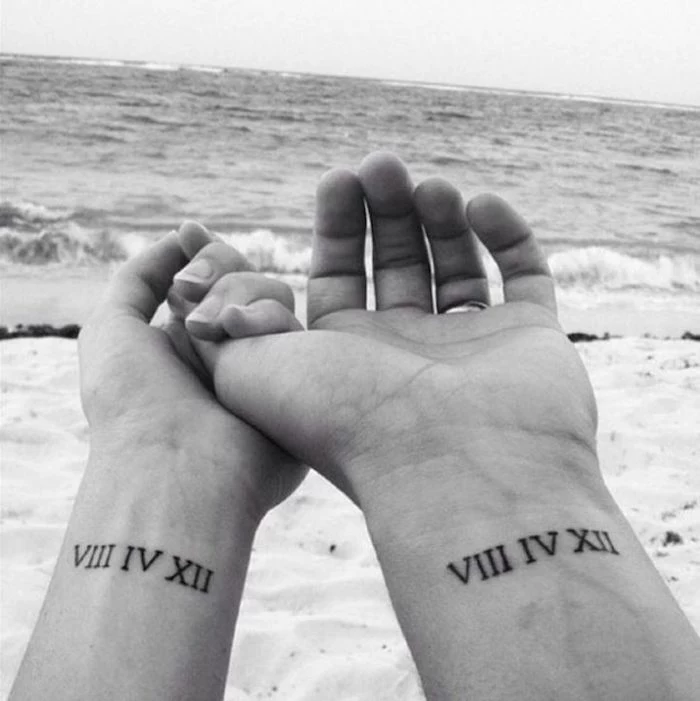

More than 40% of people consider the personal meaning to be the most important factor when choosing a tattoo design.
With Roman numerals, that meaning is baked right in. It’s not just a design; it’s a specific moment—a birth, a victory, a memorial—turned into a personal emblem. This deep connection is why the style remains a classic, far from a fleeting trend.
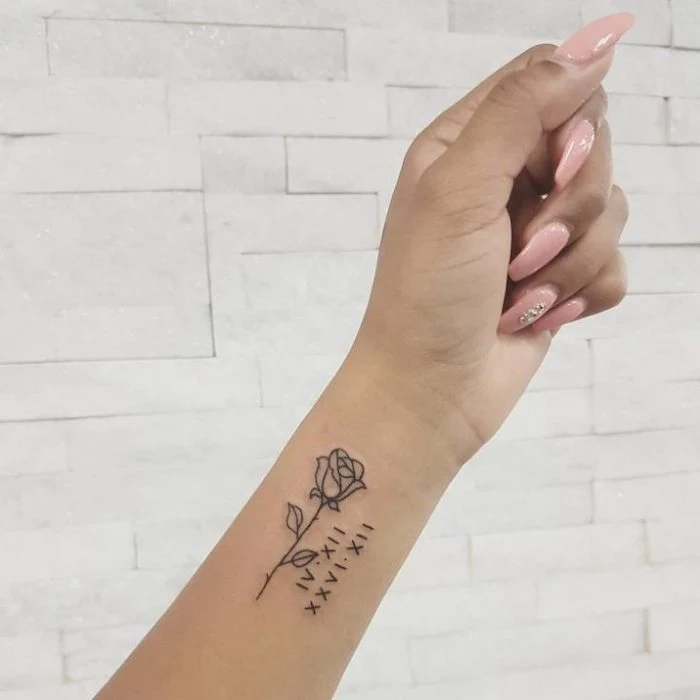
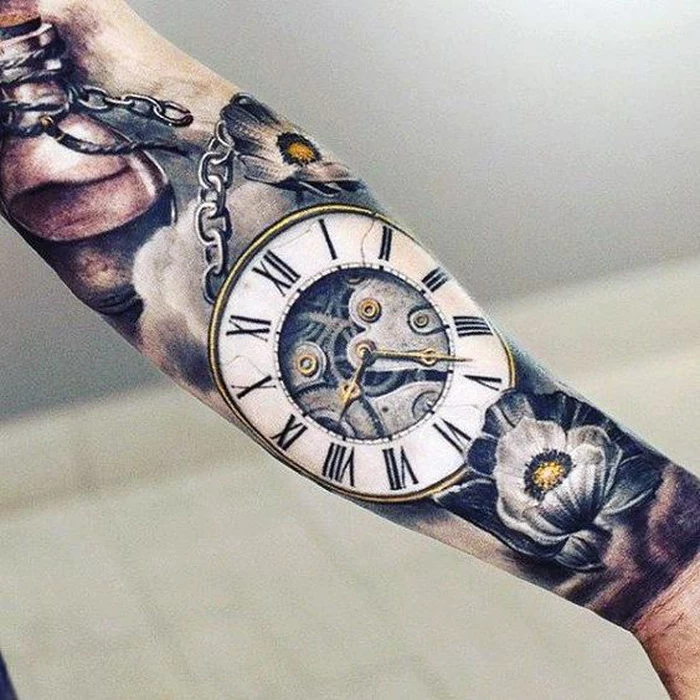
Thinking about placement?
The flow of the numerals should complement the anatomy of the body part. For a vertical placement, like along the spine or forearm, the numbers stack naturally. For a horizontal spot, like the collarbone or ribs, the line of numerals creates a strong, framing effect. Let the direction of the numbers work with your body’s lines, not against them.
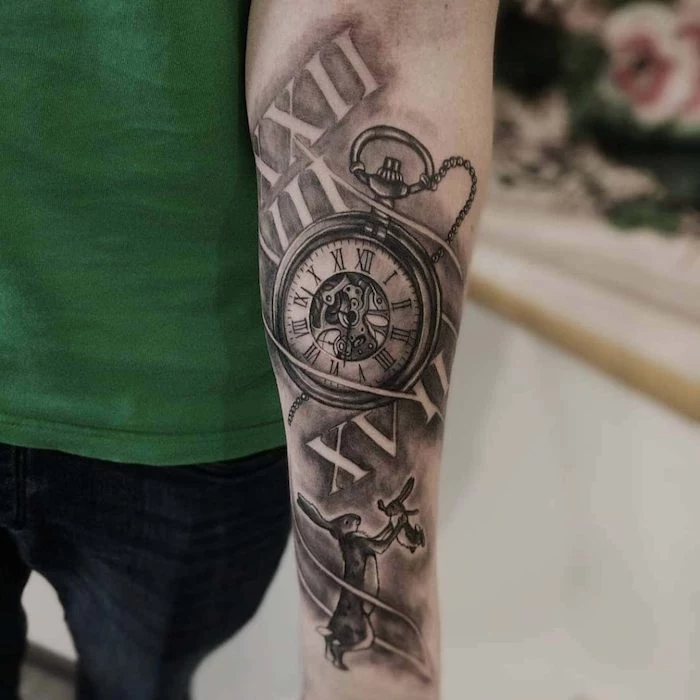
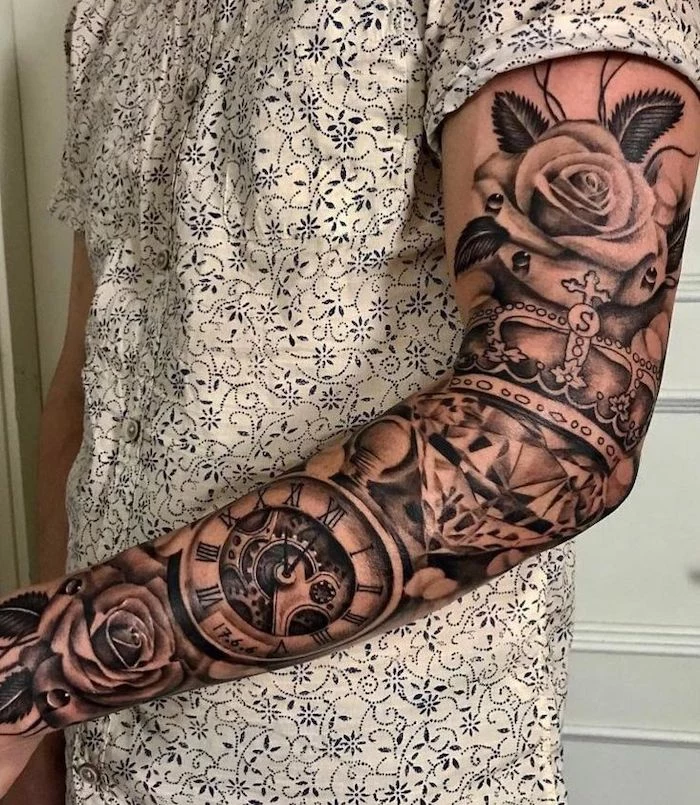
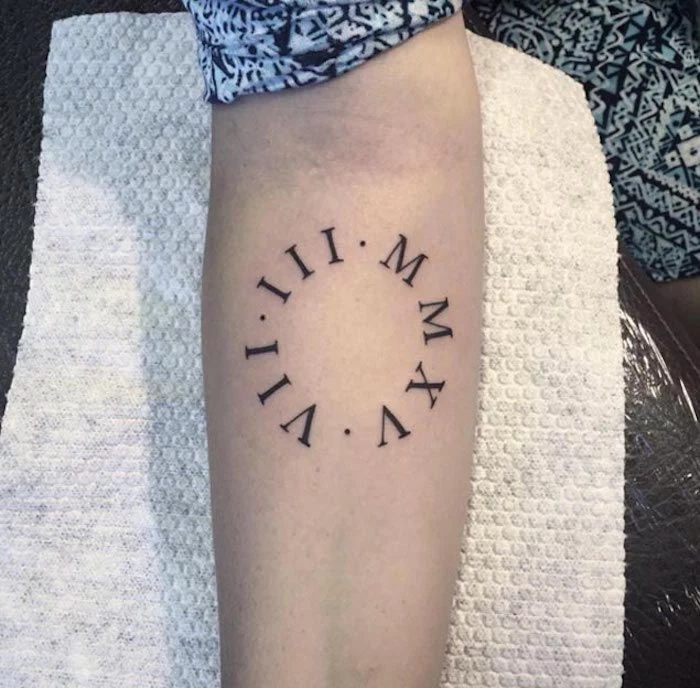
The Double-Check Manifesto: Before the needle buzzes, check your date. Then check it again. Use a reputable online Roman numeral converter, then use a different one to verify. Write it down, look at it tomorrow, and show it to a friend. It sounds excessive, but it’s the one mistake you can’t undo.
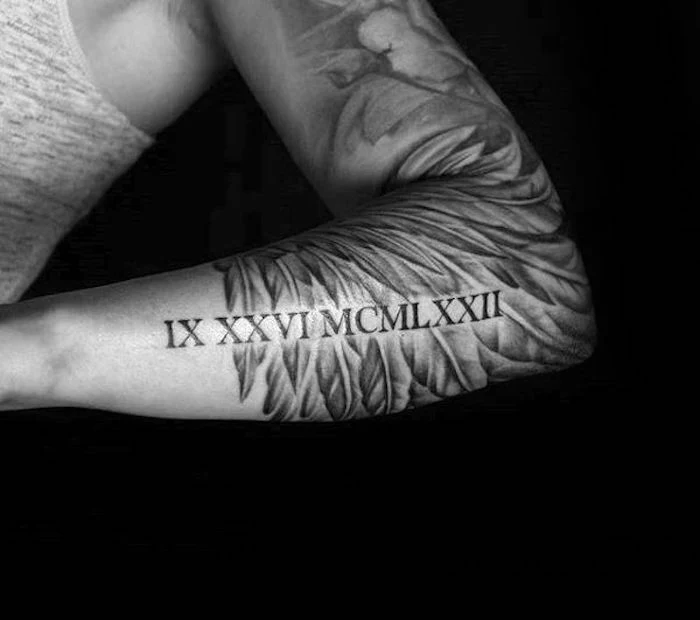
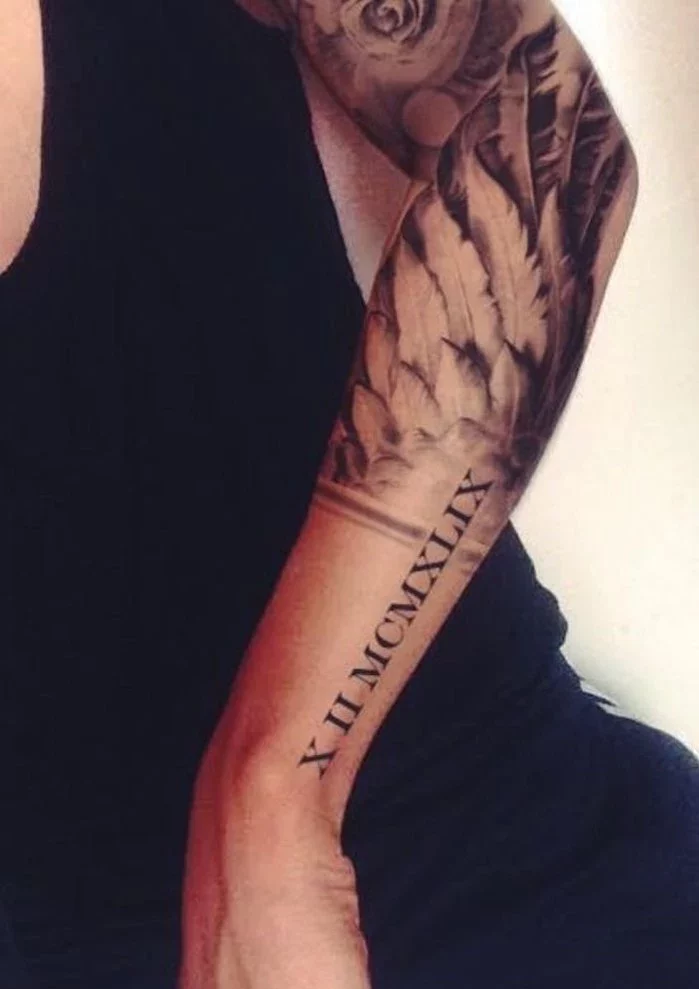
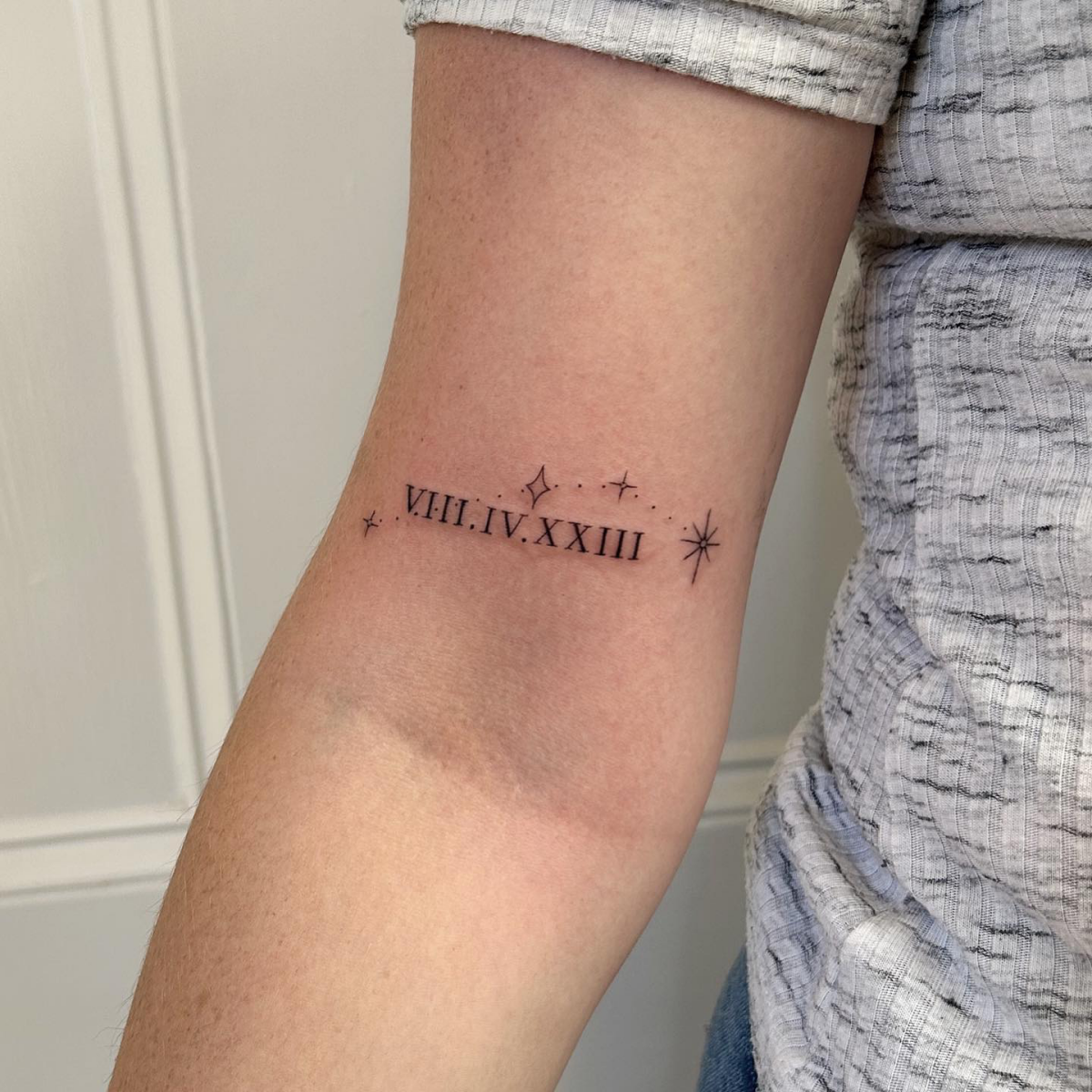
Don’t be afraid to think beyond basic black. A deep red ink can give Roman numerals a unique, almost wax-seal-like quality, especially for a significant date. It’s a bold choice that feels both modern and ancient. Discuss ink options with your artist; brands like Intenze Ink or Eternal Ink offer vibrant, long-lasting reds.
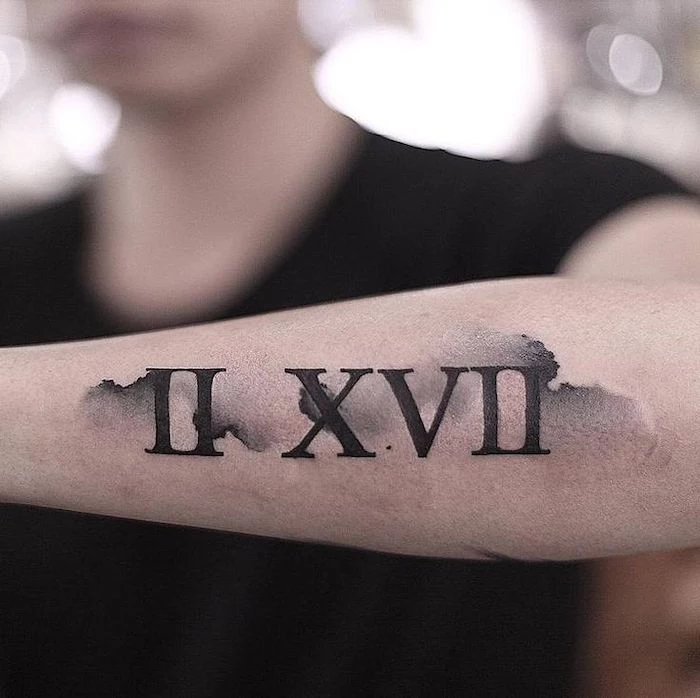

- For Longevity: Sunscreen is your tattoo’s best friend. UV rays are the primary cause of fading for all tattoos, but fine lines are particularly vulnerable. A daily application of SPF 30+ on the tattooed area is non-negotiable.
- For Vibrancy: Keep the skin hydrated. A good, unscented moisturizer helps maintain the skin’s elasticity and keeps the ink looking sharp.
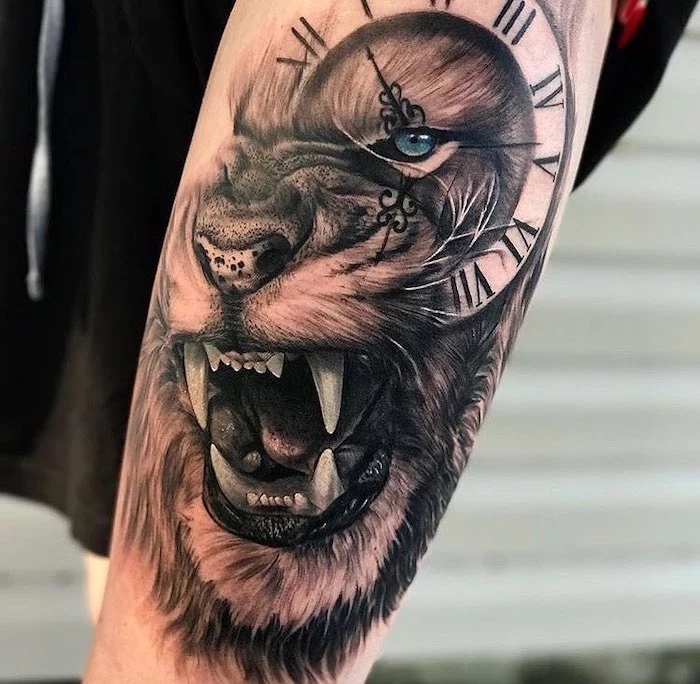
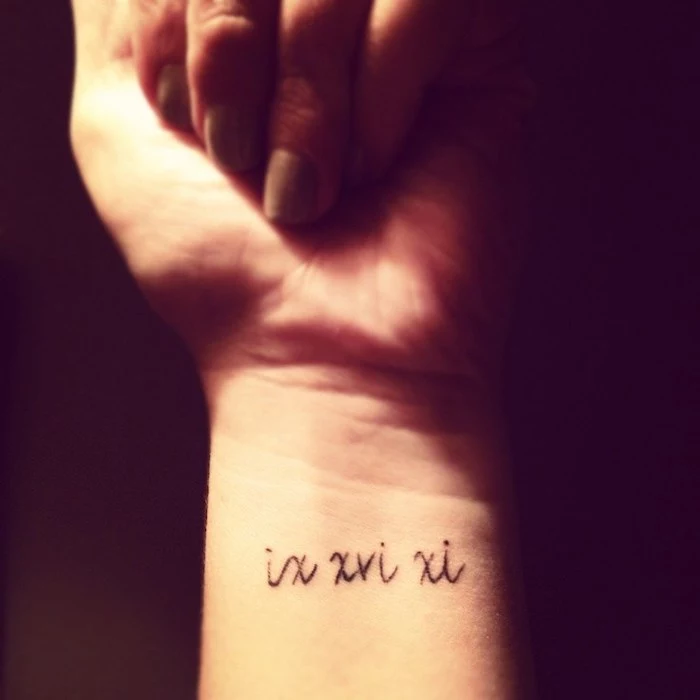
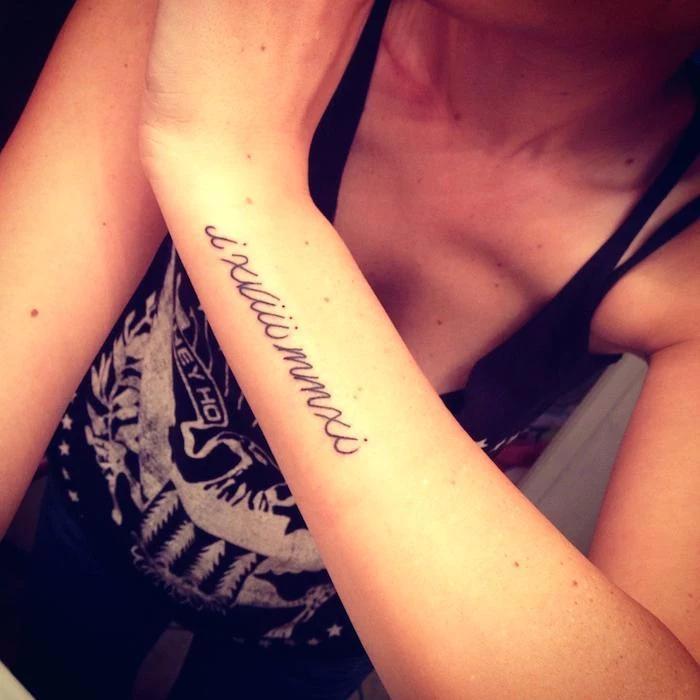
Serif vs. Sans-Serif: Serif fonts (like Times New Roman) have small decorative lines or ‘feet’ on the ends of the strokes, giving them a classic, almost chiseled-in-stone look. Sans-serif fonts (like Arial) are clean, modern, and minimalist.
For a tattoo, serifs add a touch of formality and tradition, while sans-serif feels more direct and contemporary. Your choice here defines the entire mood of the piece.
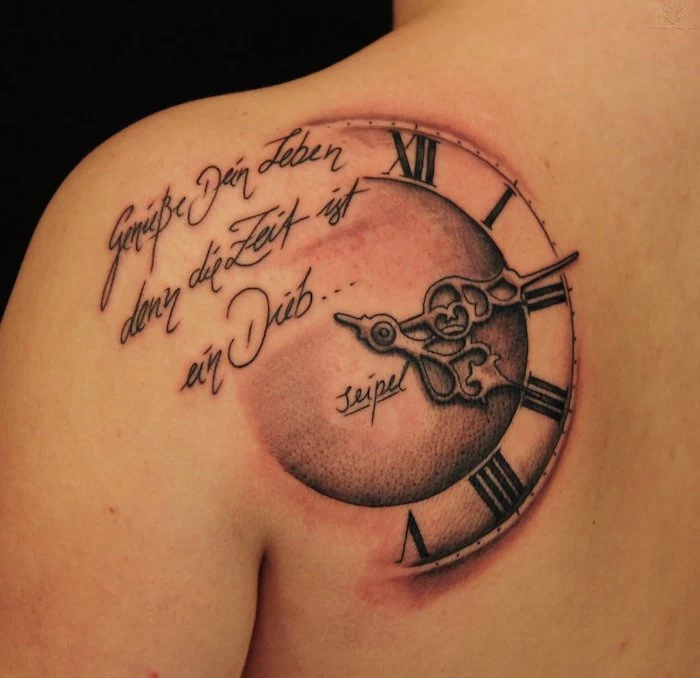
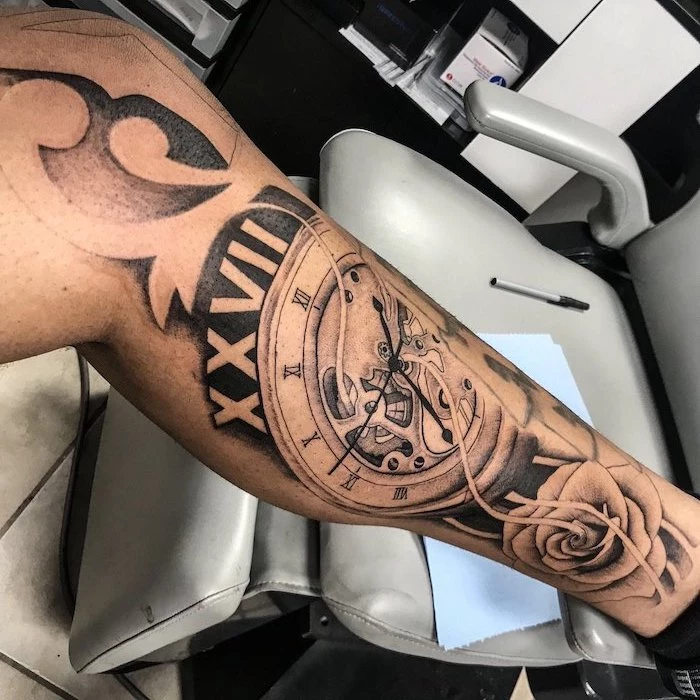
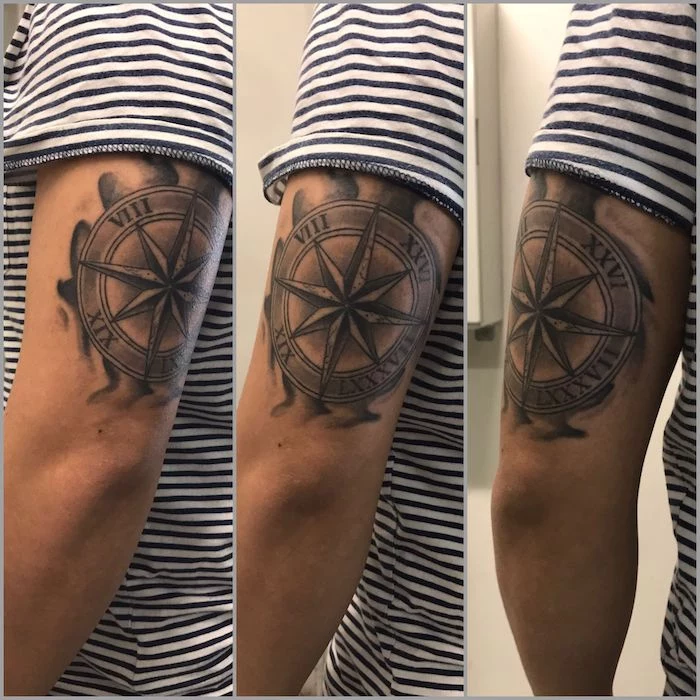
Did you know the line sometimes placed over Roman numerals, called a ‘vinculum’, signifies that the number should be multiplied by 1,000?
While you’re probably not tattooing the number 5,000 (V̅), the vinculum can be a powerful stylistic element. A single, sharp line above or below your date can add balance and a graphic edge to the final design, turning it from a simple number into a more complete emblem.
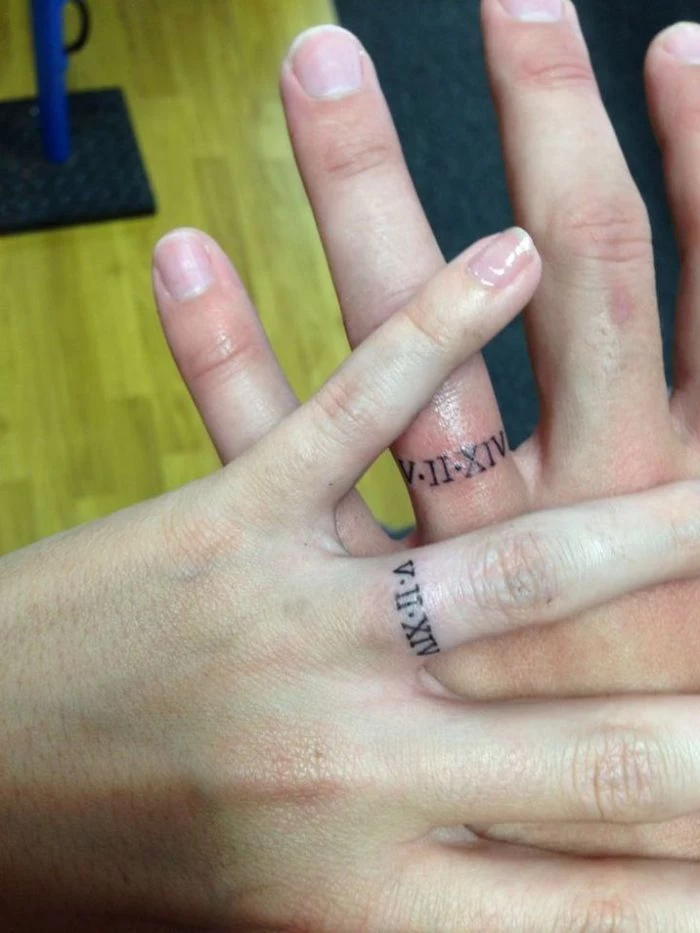
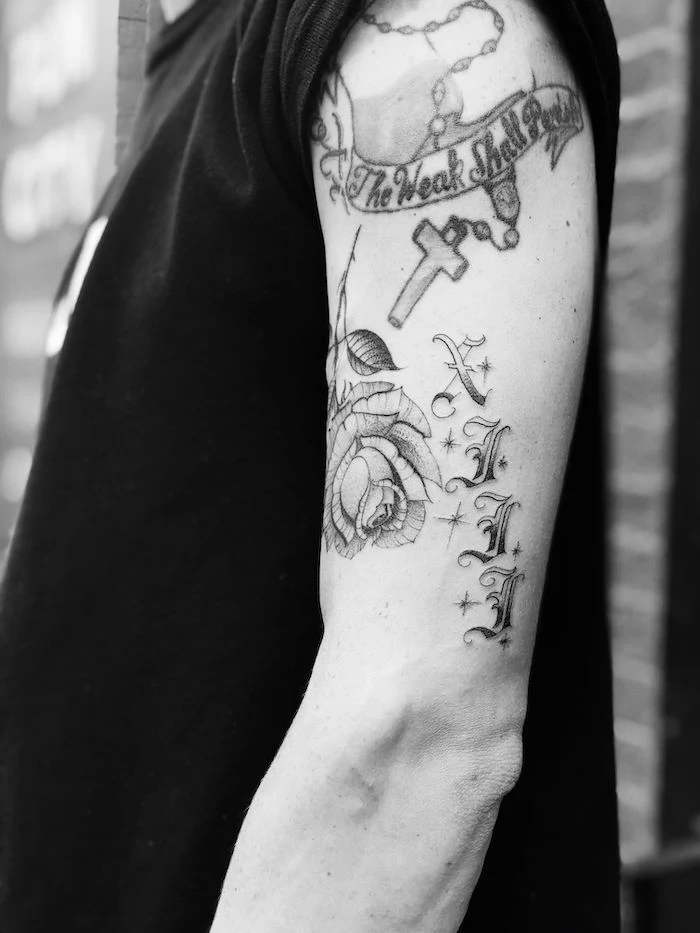
Consider the space *between* the numerals as a design element itself. This is called ‘kerning’ in typography. Too close, and the numbers can blur into an unreadable line over time. Too far apart, and the date loses its cohesion. A skilled artist will space them to be perfectly legible and aesthetically balanced for the specific size and location.
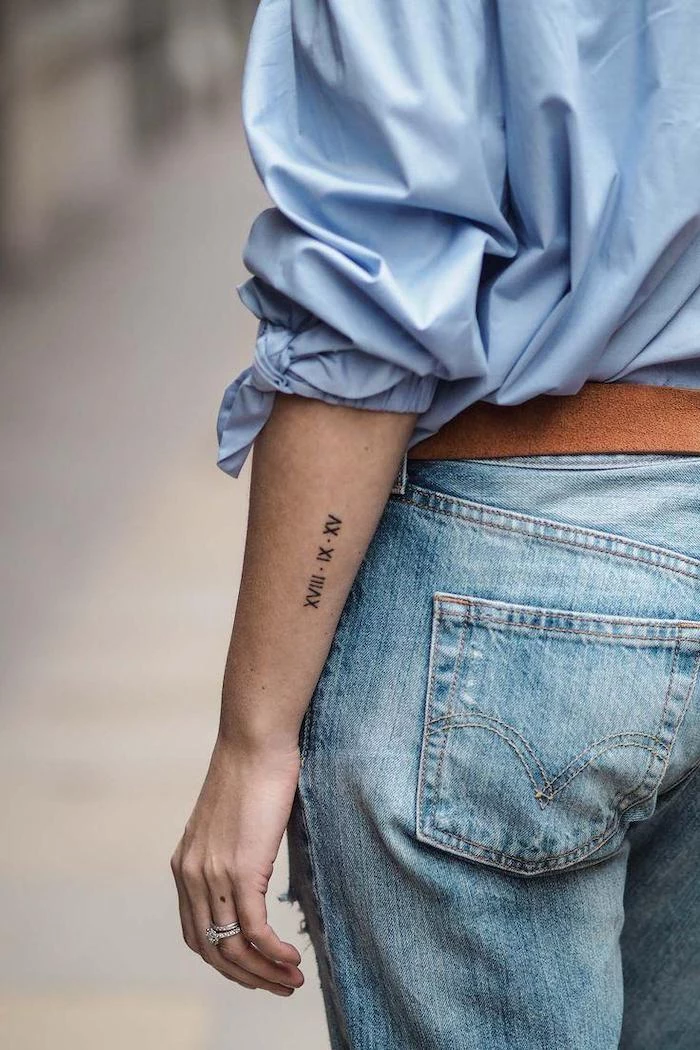
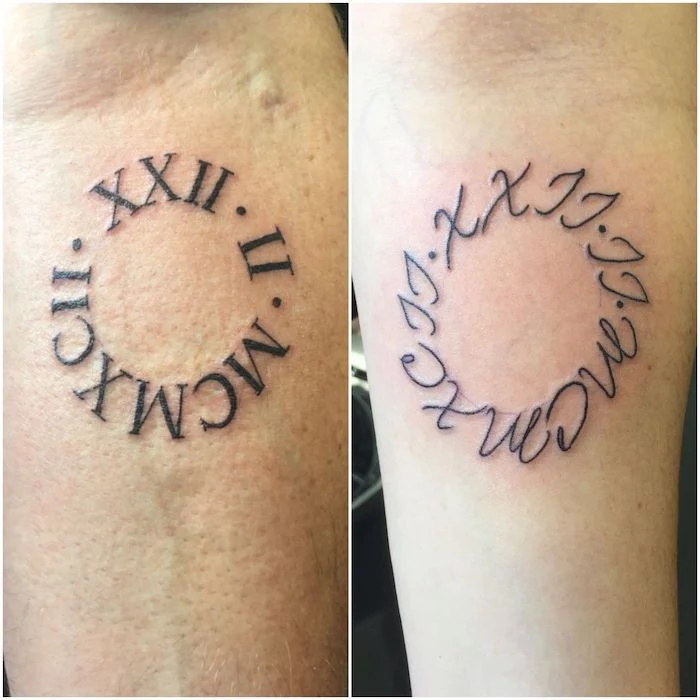
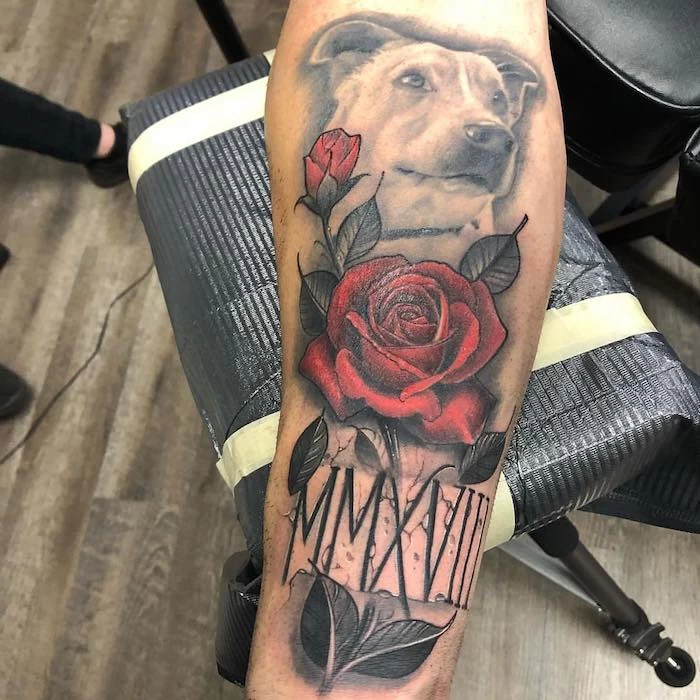
Can you test-drive your tattoo?
Absolutely. Before committing forever, try a high-quality temporary version. Companies like Inkbox offer semi-permanent tattoos that last 1-2 weeks, giving you a real feel for the placement and size. It’s the perfect way to confirm your decision and ensure you have zero regrets when the real needle comes out.
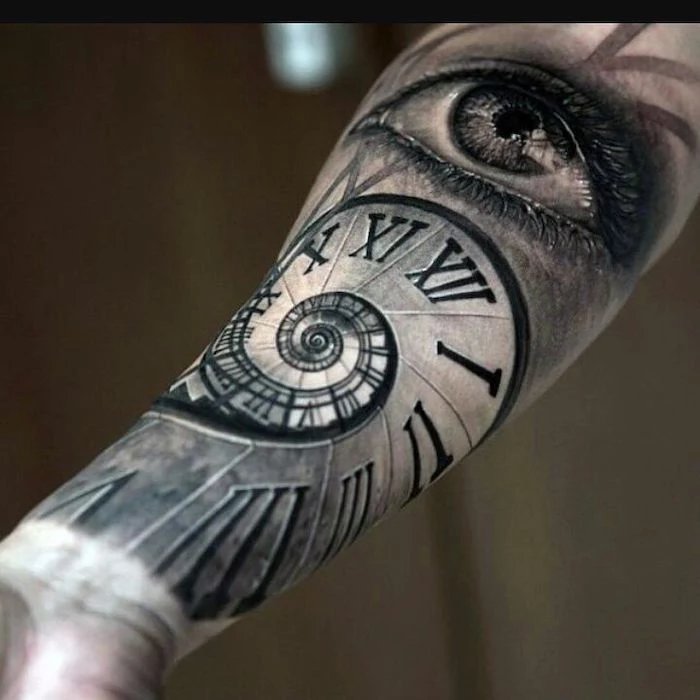
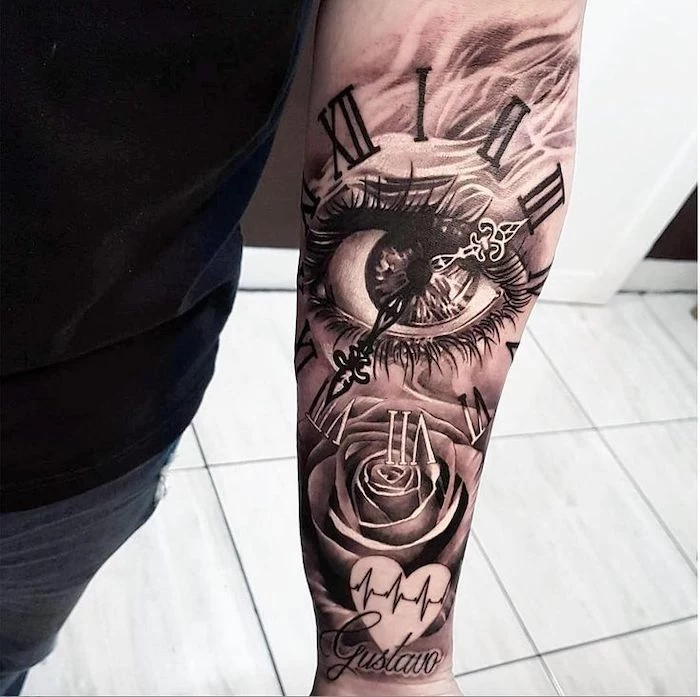
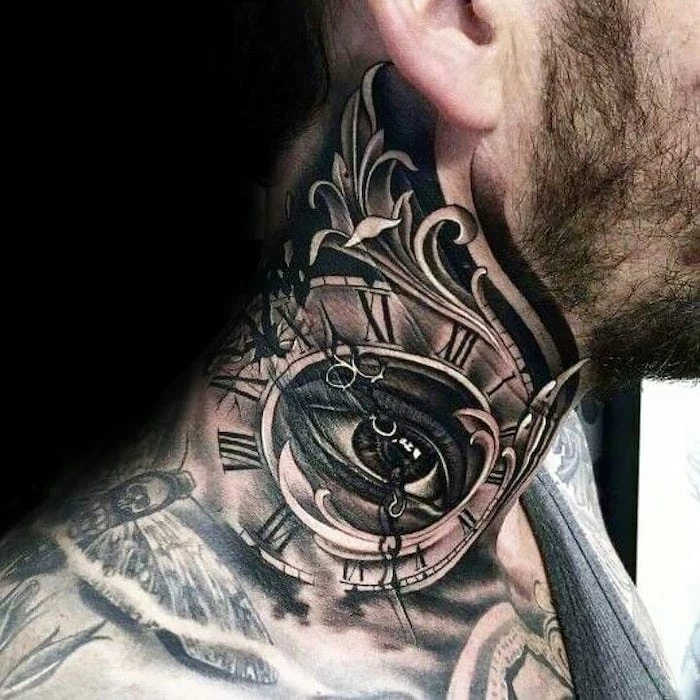
- Try combining the date with the birth flower of a loved one.
- Incorporate a small symbol that represents the event, like a tiny anchor for a day you found stability.
- Weave the numerals into the stem of a rose or the shaft of an arrow.
A simple date can become a much richer story with the addition of one meaningful graphic element.
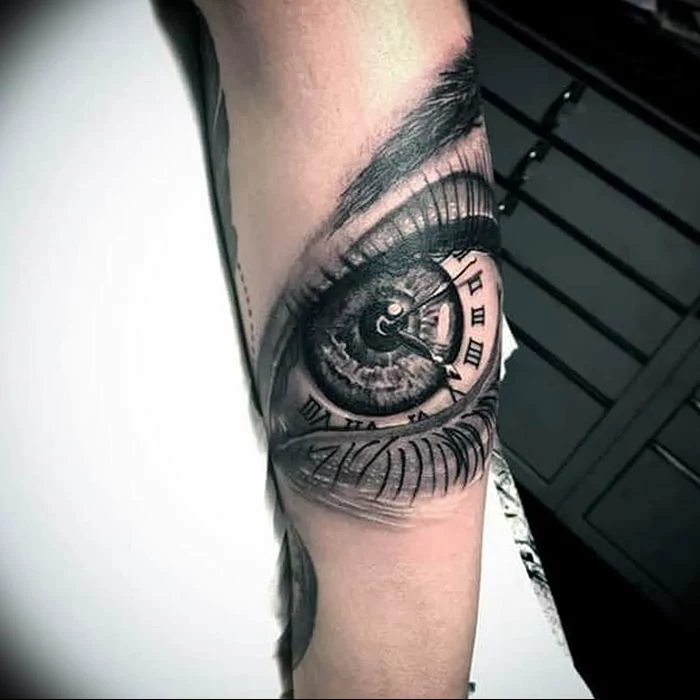
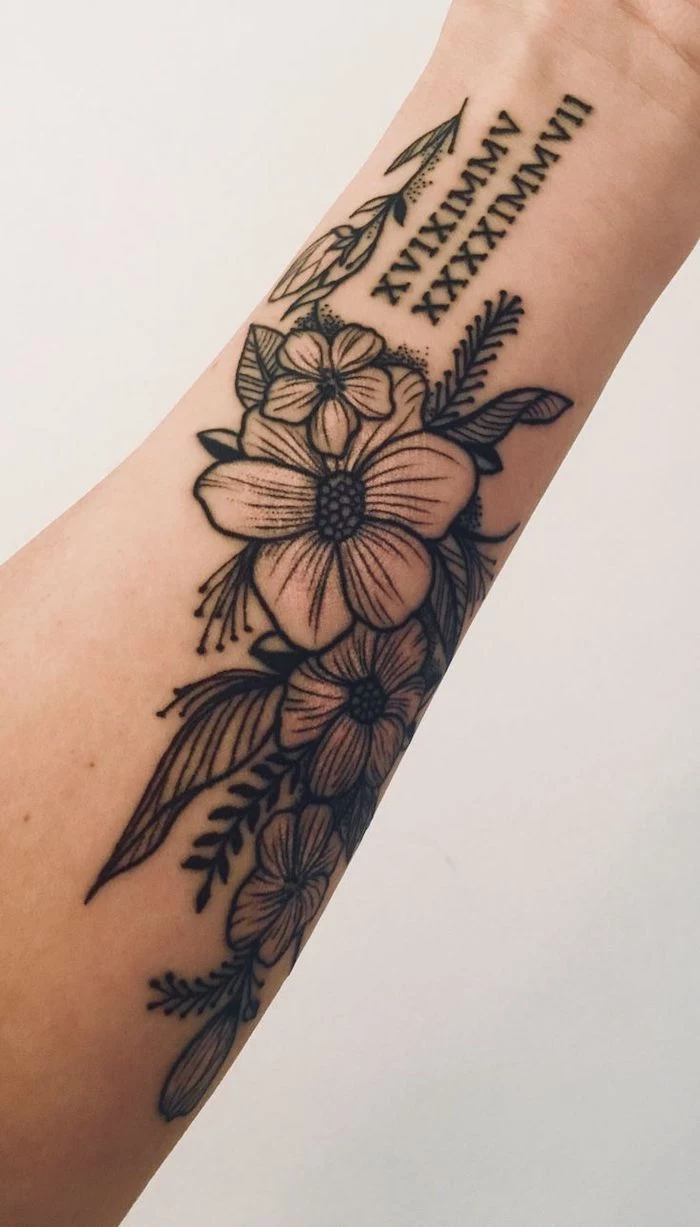
A note on white ink: While visually stunning when fresh, white ink Roman numeral tattoos are notoriously hard to predict. They can fade quickly, sometimes turn a yellowish hue, and don’t show up well on all skin tones. It’s a high-maintenance choice that many artists will caution against for a design that relies on crisp legibility.
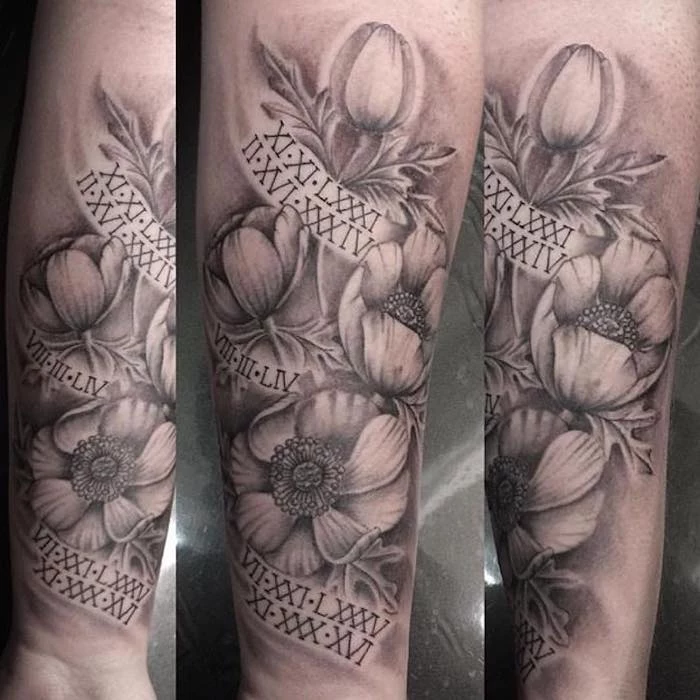
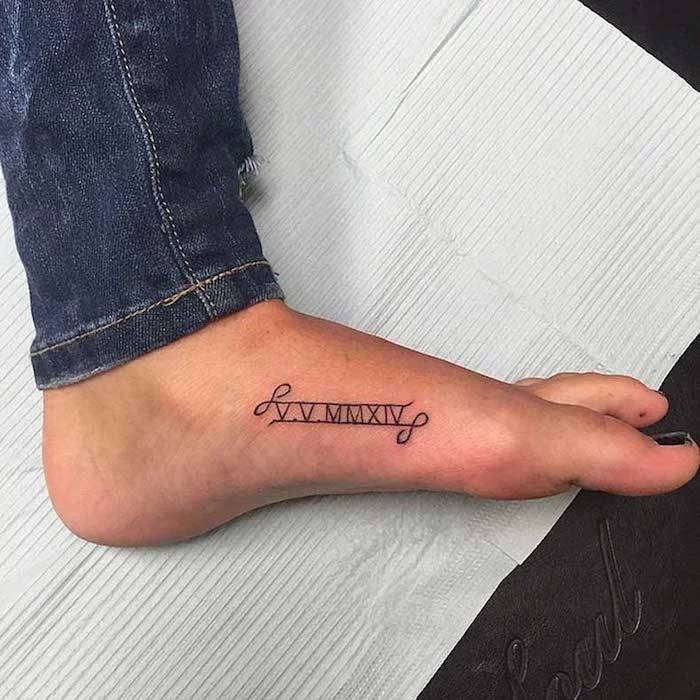
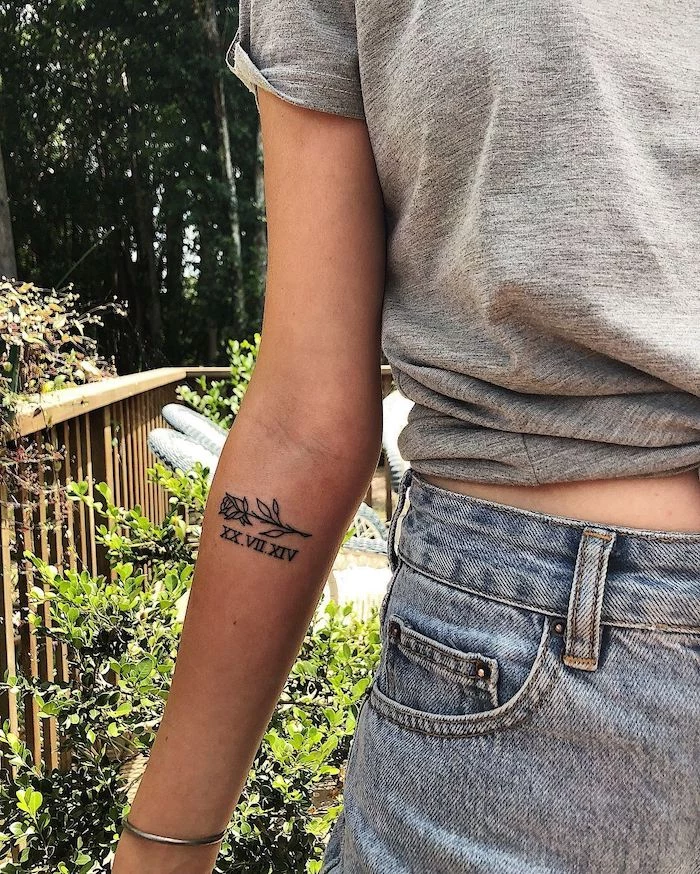
The skin on your hands and feet regenerates faster than almost anywhere else on your body.
This means a delicate Roman numeral tattoo on your finger or the side of your foot will likely fade much faster and be more prone to ‘blowout’ (where the ink spreads under the skin). If you choose these placements, be prepared for more frequent touch-ups to keep it looking sharp.
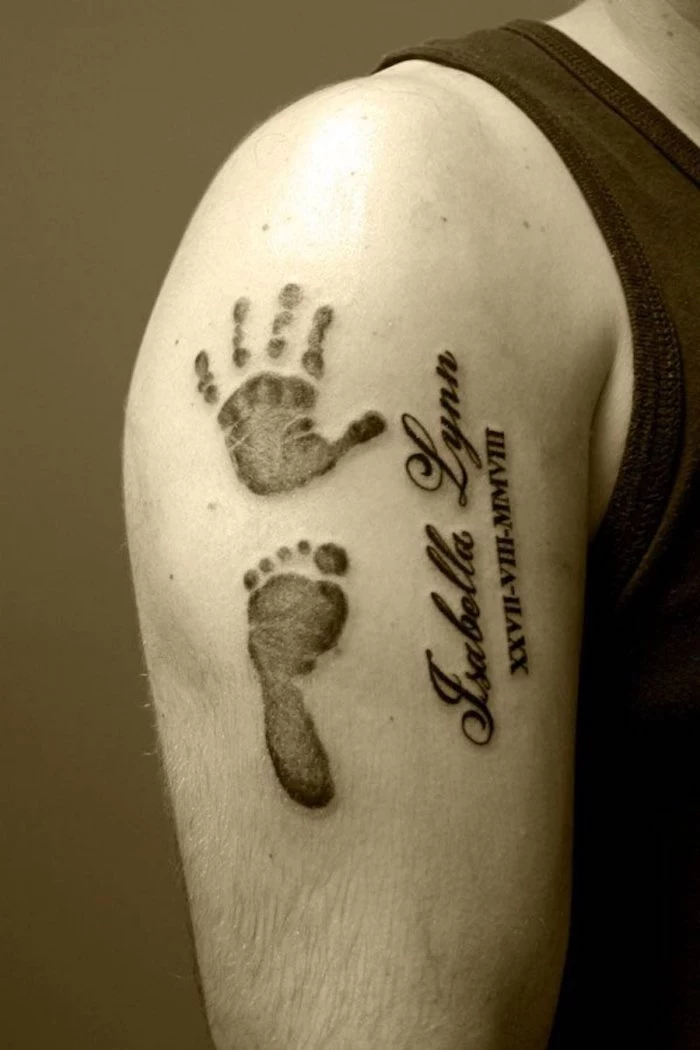
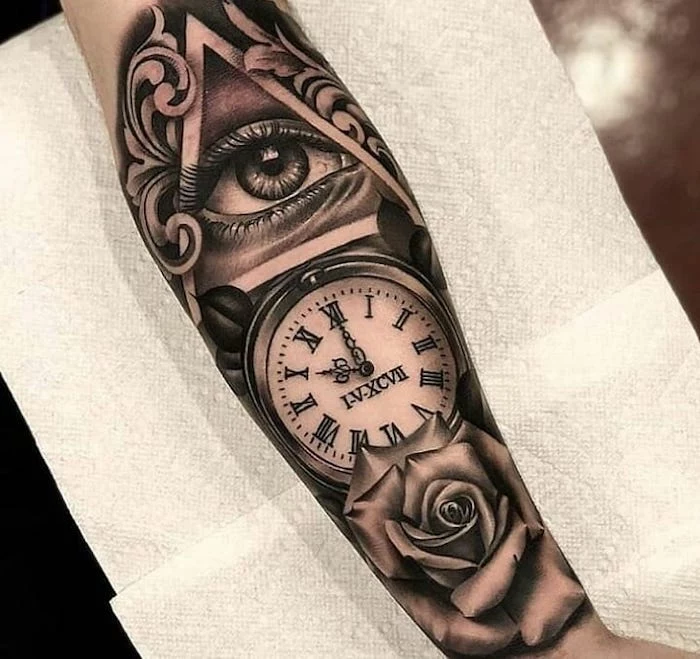
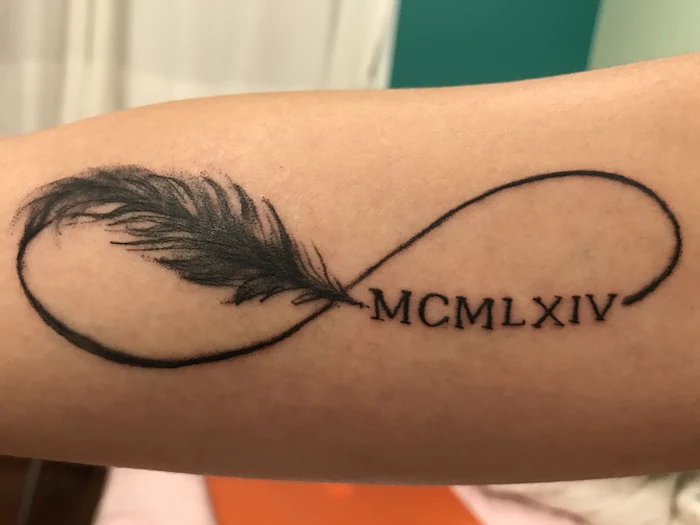
Think about the number of characters in your date. A short date like ‘V.X.MMXX’ (5.10.2020) will have a different visual balance than a long one like ‘XII.XXVII.MCMLXXXIX’ (12.27.1989). Discuss the flow and length with your artist to find a composition that looks intentional, not like a crowded receipt.
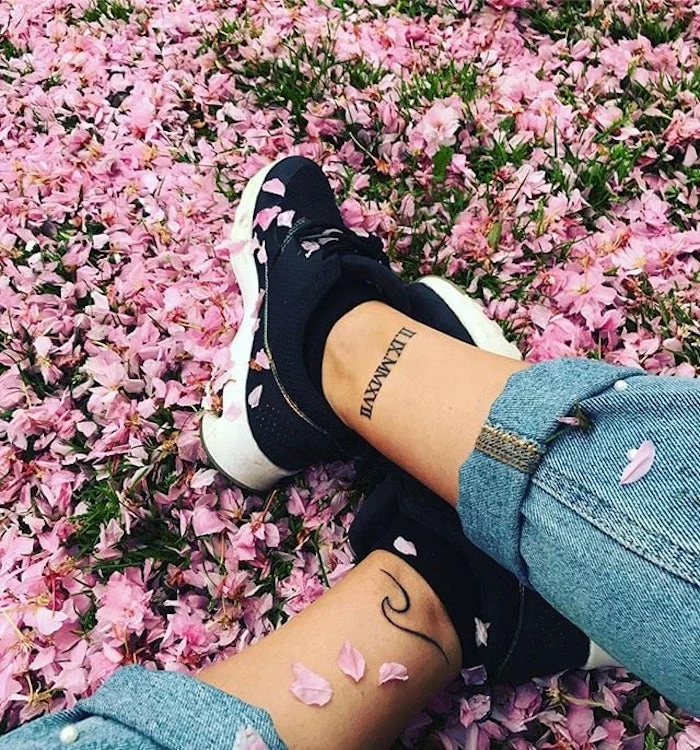
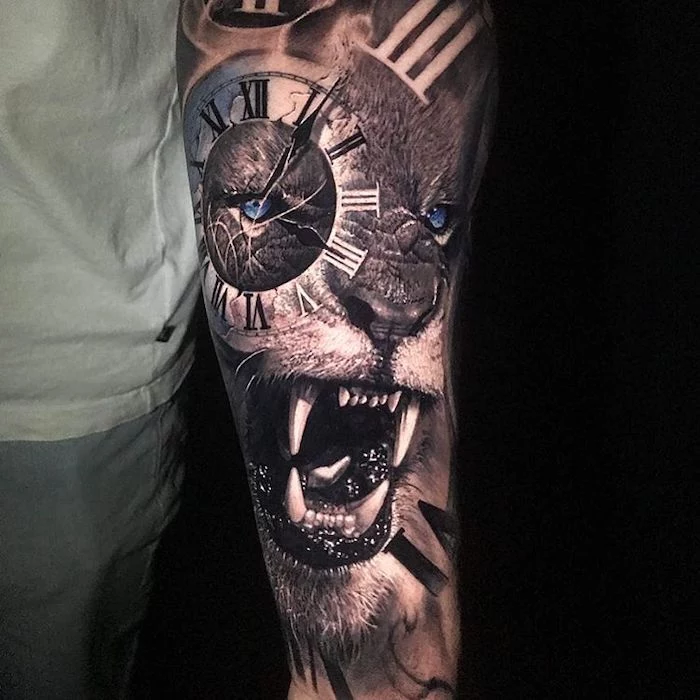
Forearm: Highly visible, relatively low pain, and a great canvas for linear designs. The skin is stable, meaning the tattoo tends to age well.
Ribcage: More intimate and easy to conceal. However, it’s known to be a more painful spot, and the design will stretch and move with your breathing.
Choose based on your pain tolerance and how public or private you want your story to be.
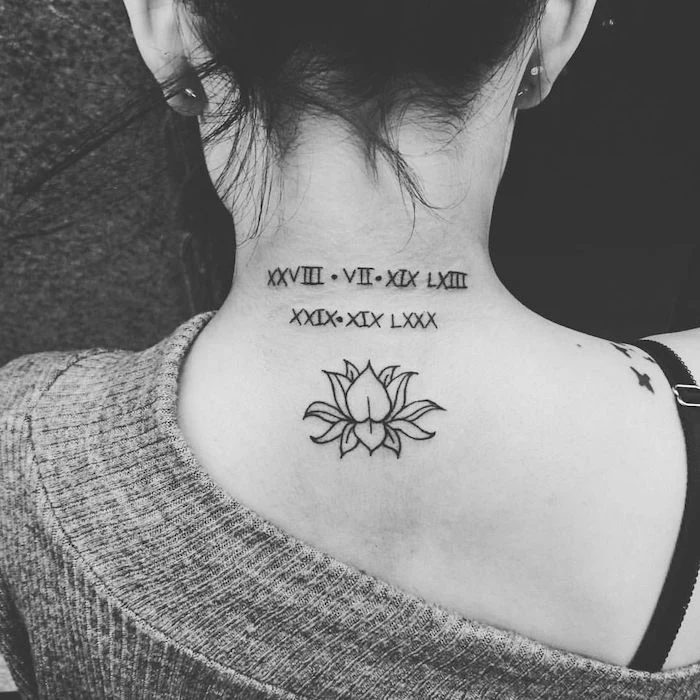
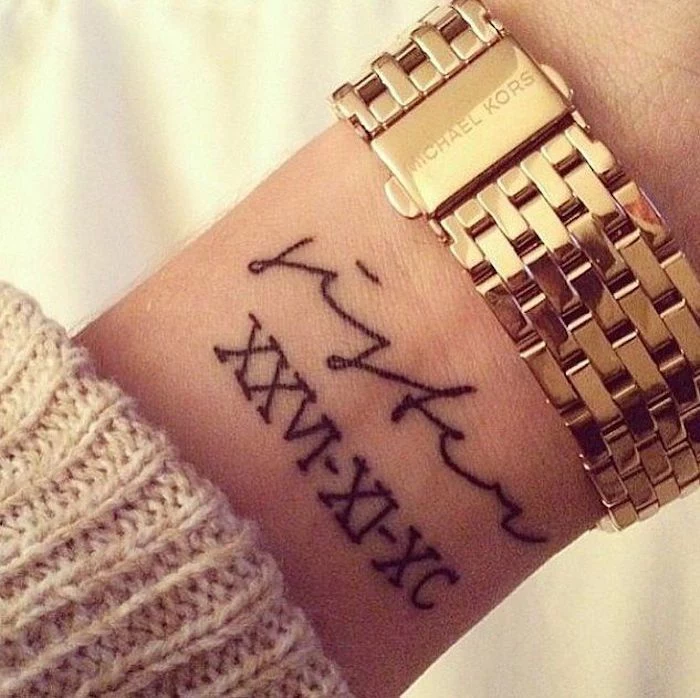
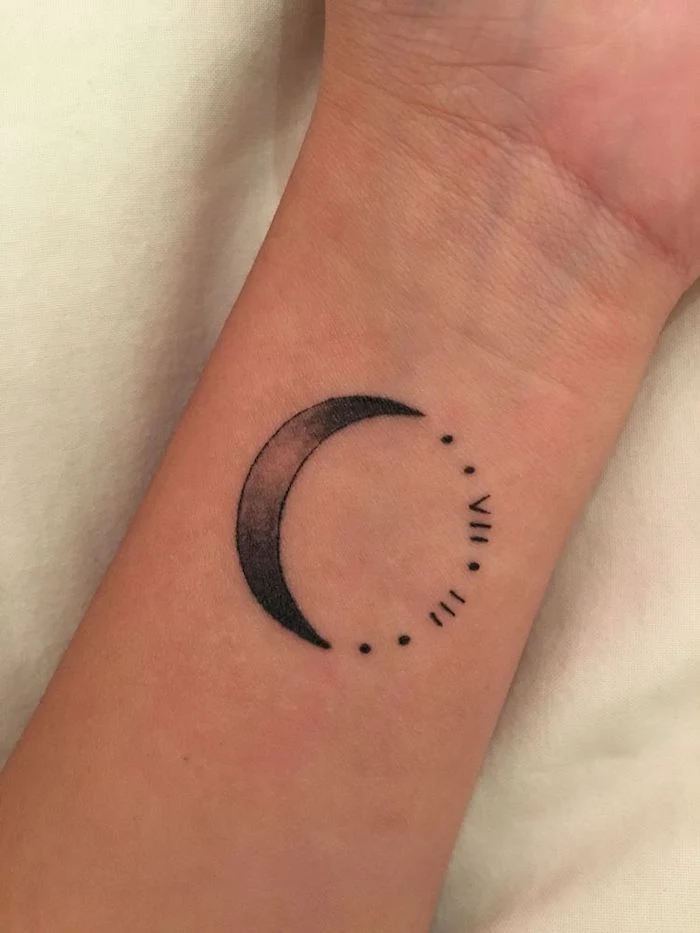
The aftercare phase is crucial for fine lines. For the first few days, many artists recommend a healing ointment like Aquaphor or a specialized tattoo product like Hustle Butter Deluxe to create a protective barrier. After that, switch to a lightweight, fragrance-free lotion to keep the skin hydrated without clogging pores. Proper healing prevents scabbing, which can pull ink out and create gaps in your numerals.
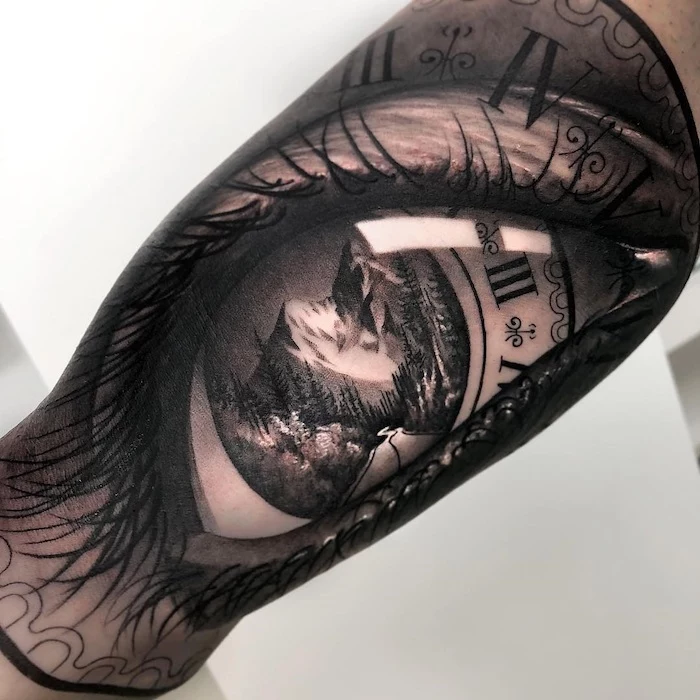
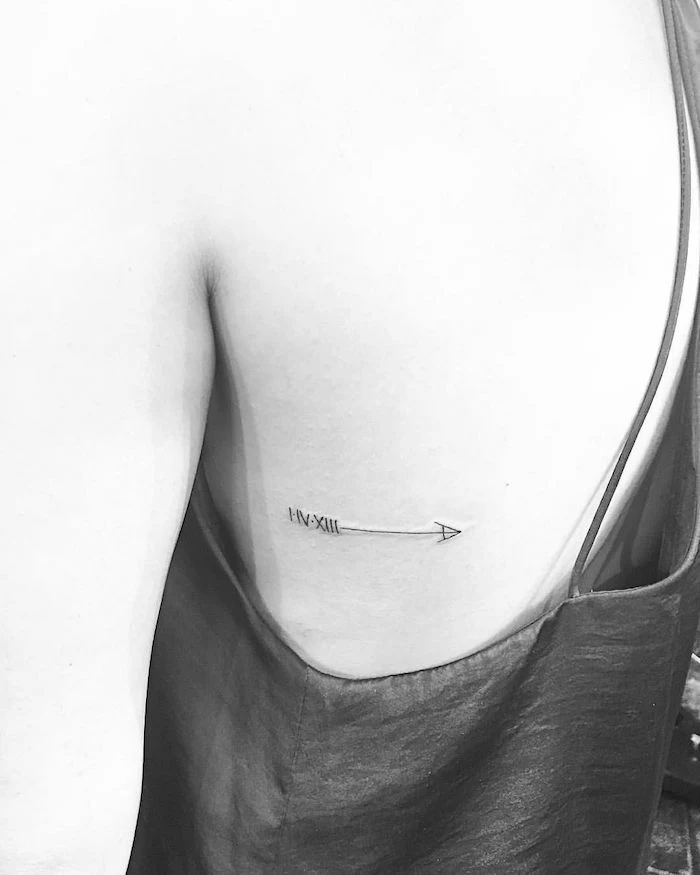
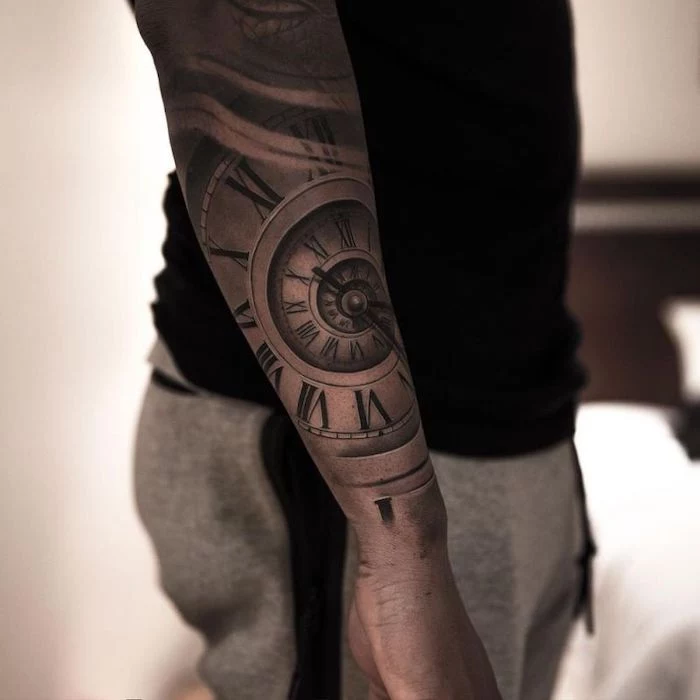
- A clean, sharp, and perfectly executed tattoo.
- A design that heals beautifully with minimal fading.
The secret? An artist who specializes in ‘single needle’ tattoos. This technique uses a single tattoo needle to create incredibly fine, detailed lines, perfect for the precision that Roman numerals demand. Search for artists using the hashtag #singleneedletattoo to find a specialist.
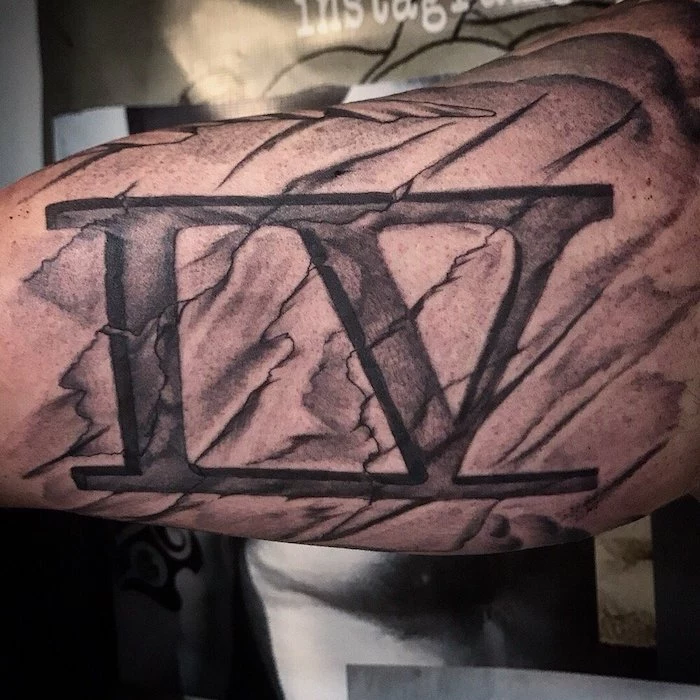
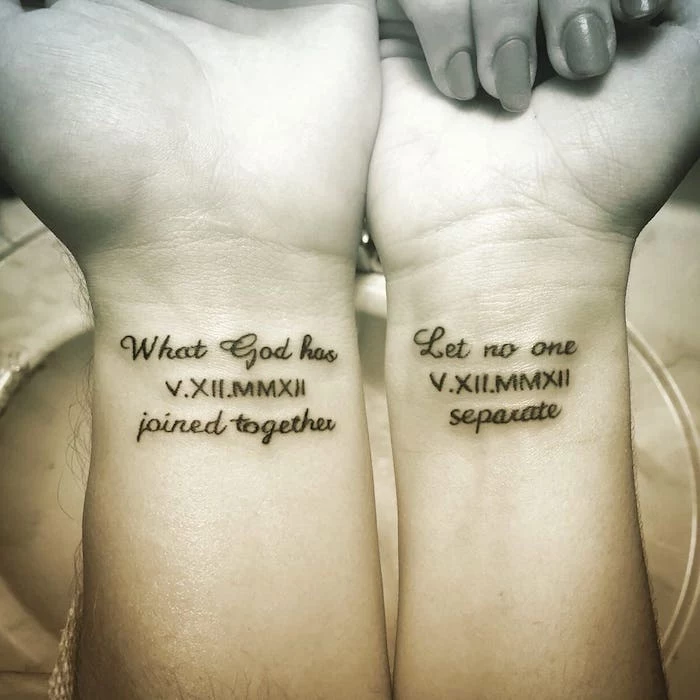
A growing trend is to use Roman numerals not for a date, but for a number of personal significance. It could be a lucky number, an old jersey number, or the number of people in your family. This strips the design down to its purest form, creating an abstract and deeply personal piece of art.

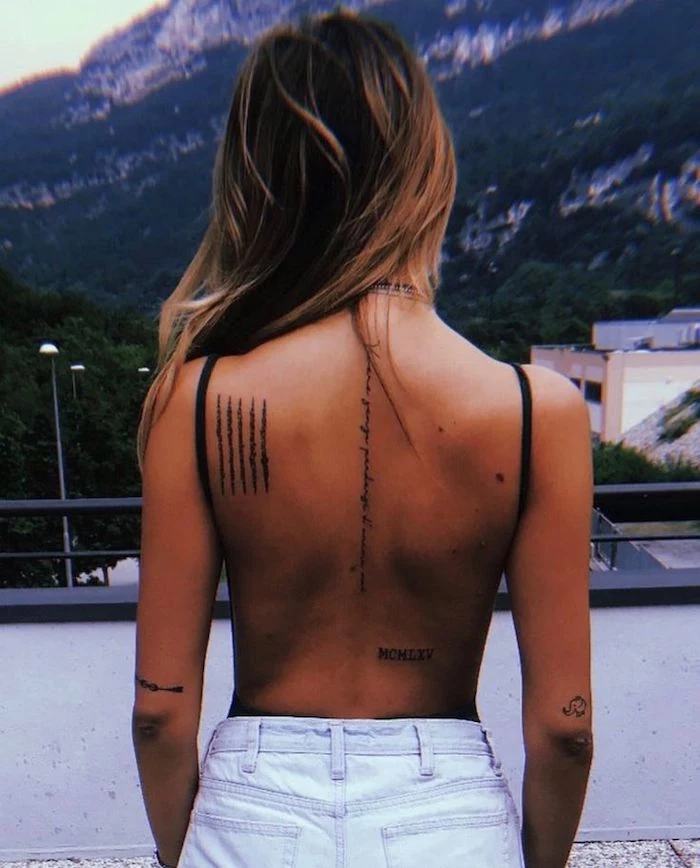
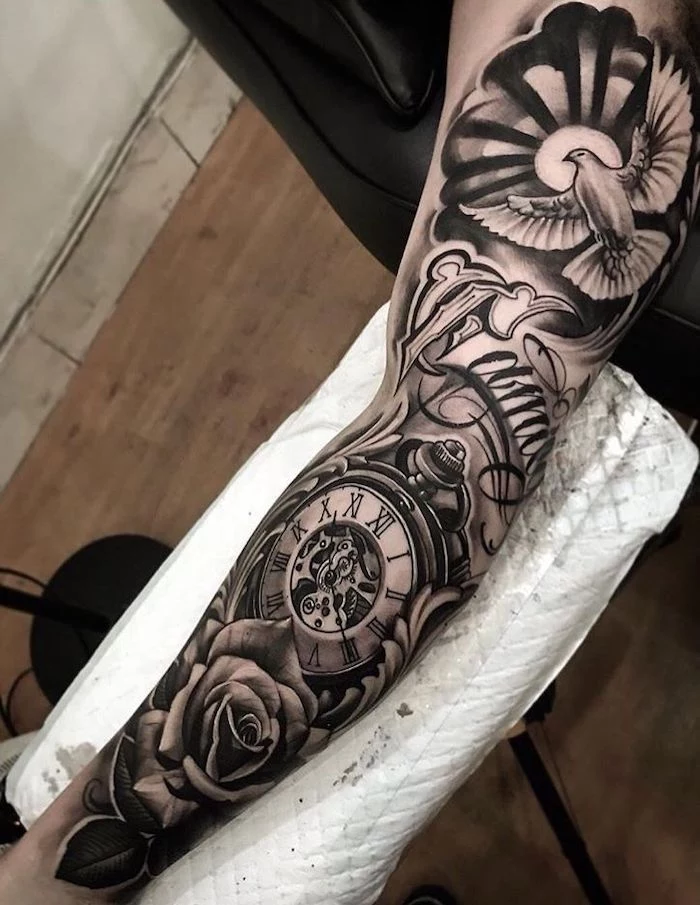
Important point: Scaling down a complex font can be disastrous. A beautiful, ornate Roman numeral font might look amazing on a computer screen, but when shrunk to one inch on your wrist, the delicate details will merge into an illegible smudge over time. For smaller tattoos, a simple, clean, sans-serif font is always the safer and more future-proof option.
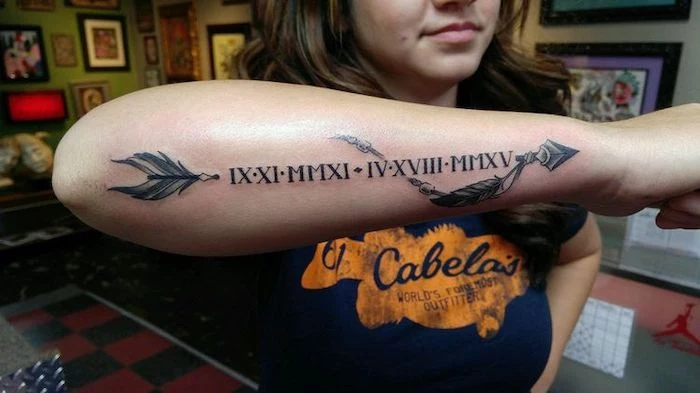
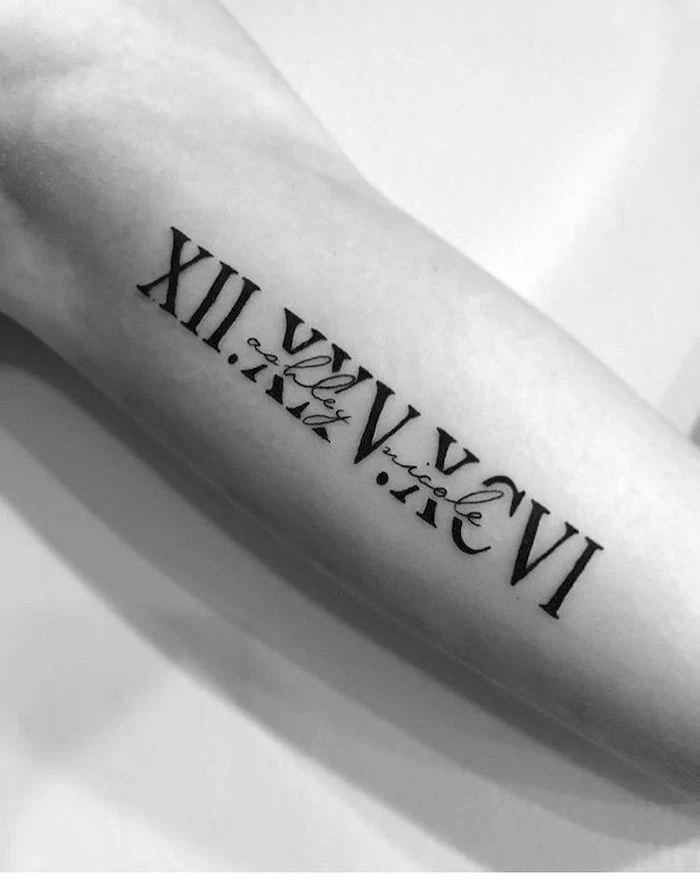
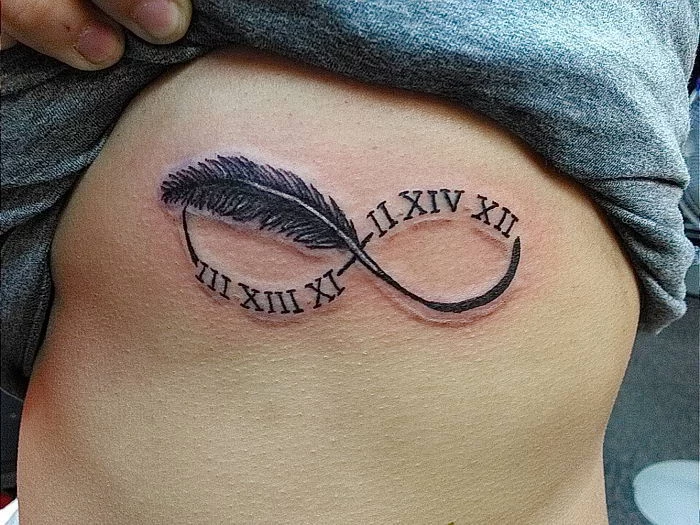
“The details are not the details. They make the design.” – Charles Eames
This is the perfect philosophy for a Roman numeral tattoo. The choice of font, the spacing between characters, the line weight, and the placement are not minor points—they are the entire design. Treat every decision with intention.
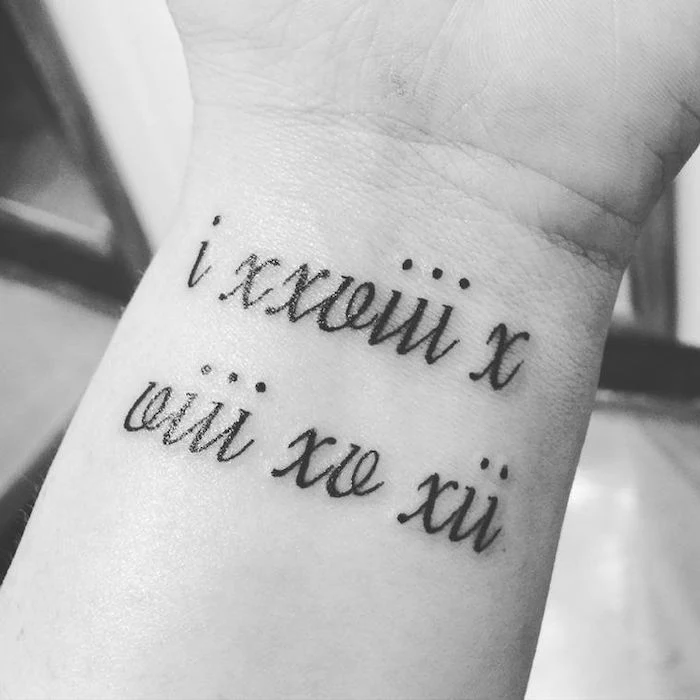
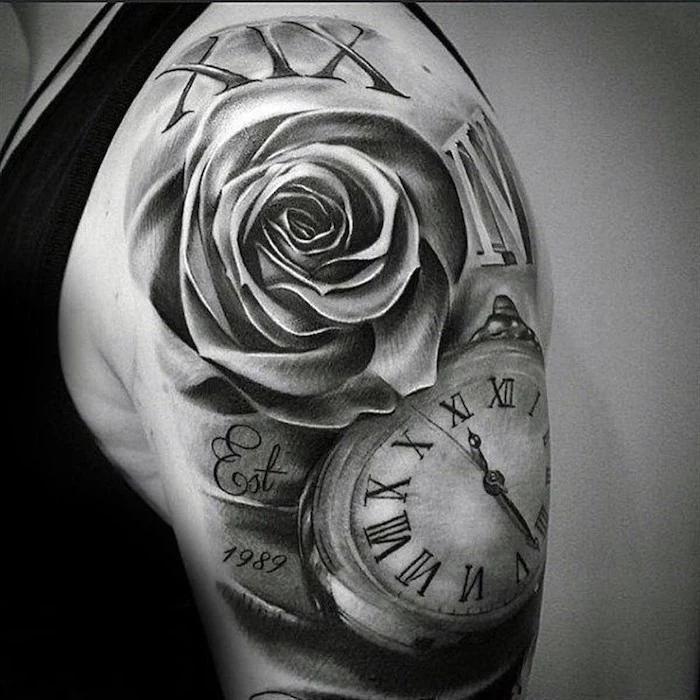
From David Beckham’s ‘VII’ to Rihanna’s collarbone date, celebrity tattoos have long inspired ink lovers. But use them as a starting point, not a blueprint. Notice how their tattoos are scaled and placed to fit their specific bodies. The goal is to get a tattoo that looks as good on you as theirs does on them, not to get the exact same piece.
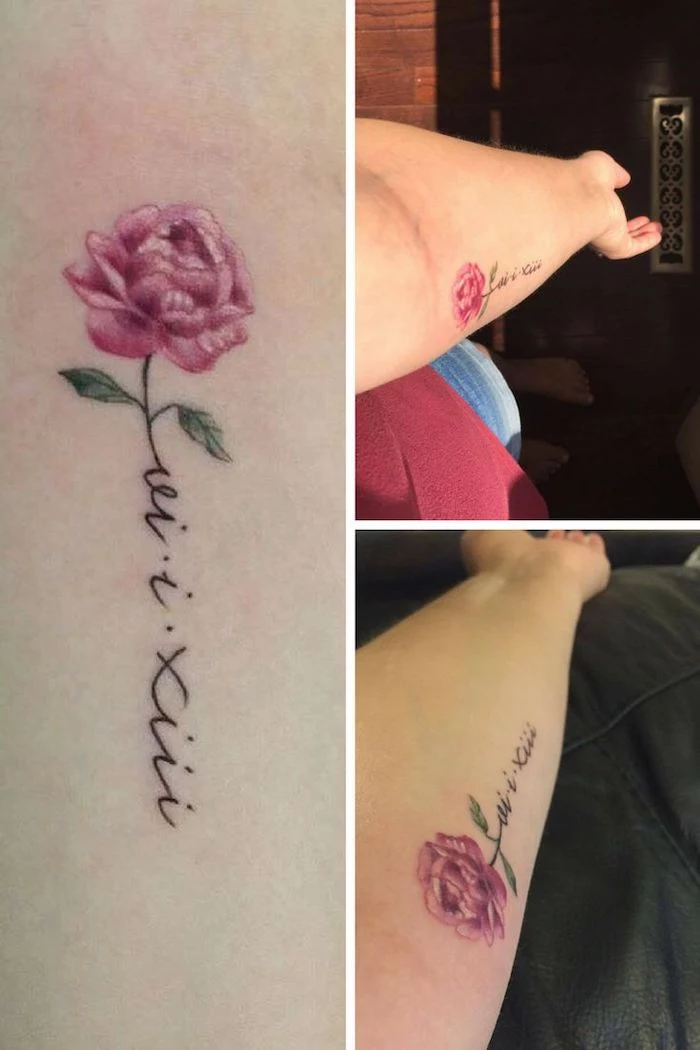
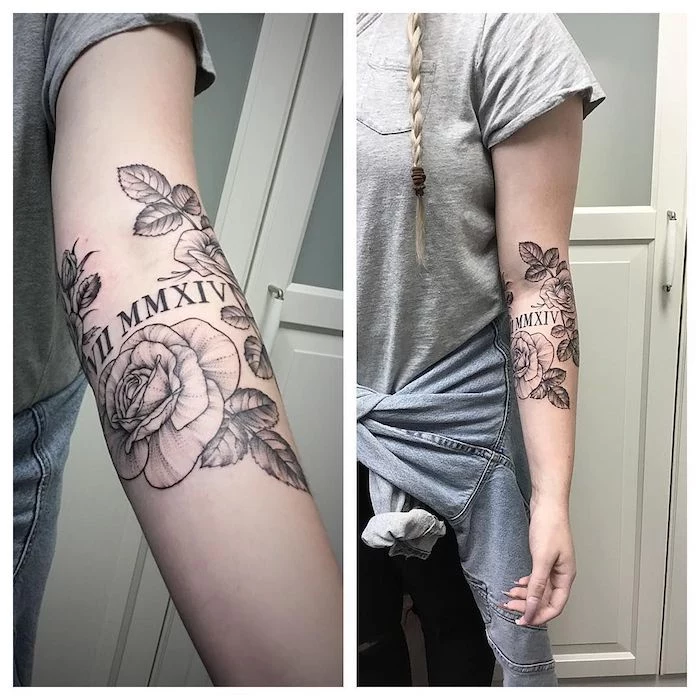
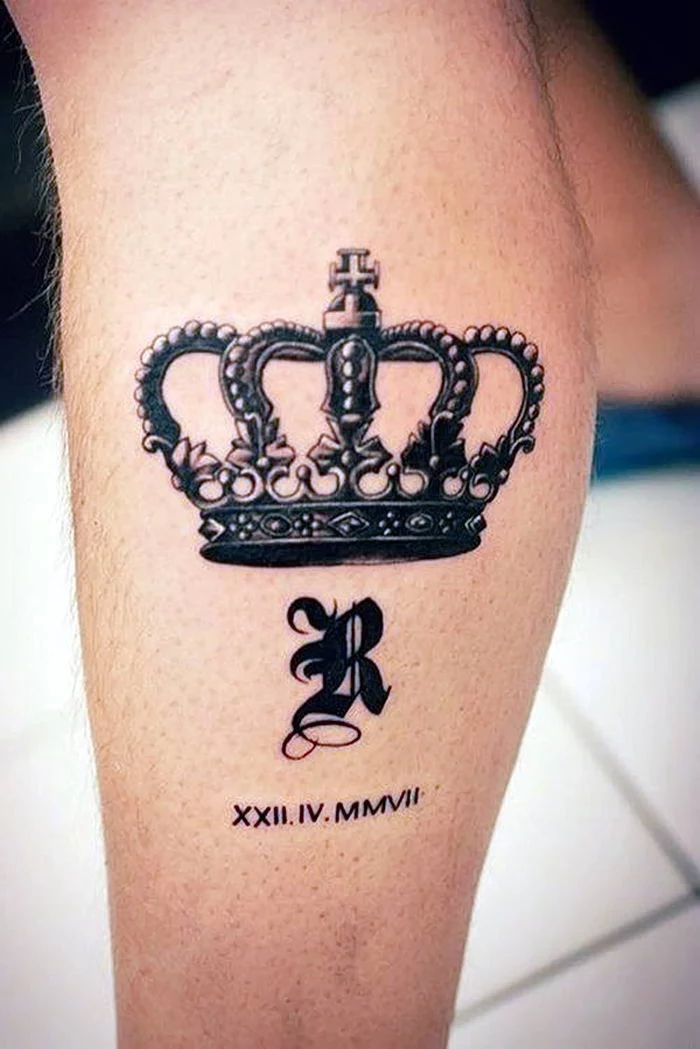
What if the date is for a loved one who has passed?
This can be an incredibly powerful act of remembrance. Consider pairing the numerals with a symbol of tribute, like their favorite flower, a pair of angel wings, or a tiny heartbeat line. The tattoo becomes more than a date; it becomes a permanent monument to their memory, carried with you always.
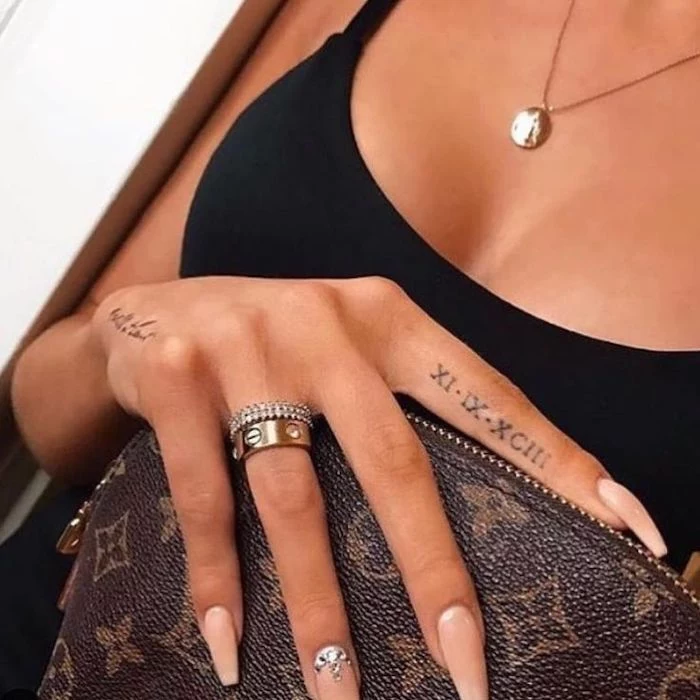
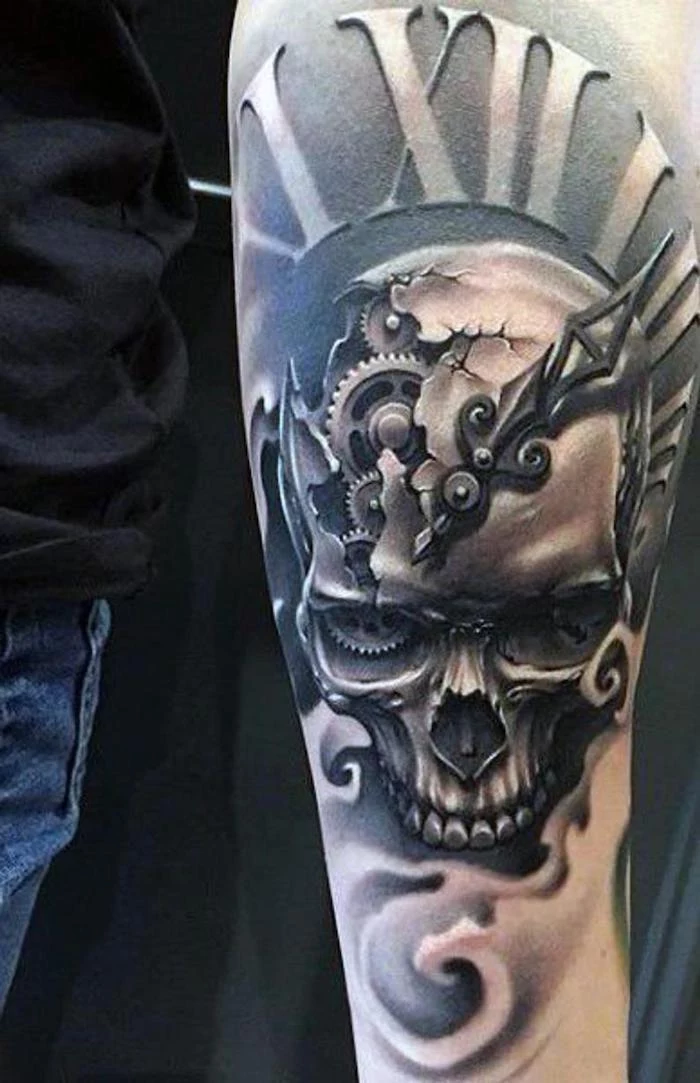
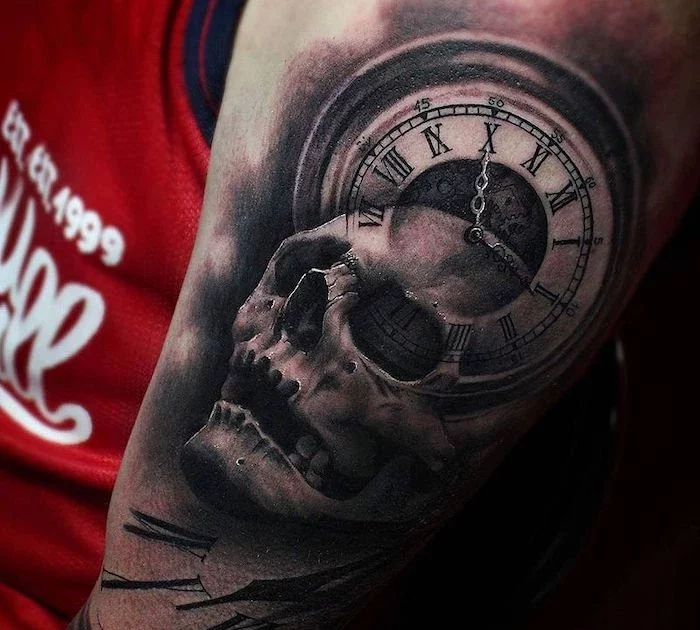
Don’t just think about the tattoo itself, but the negative space around it. A single line of Roman numerals placed thoughtfully on the back of an arm or under the collarbone uses the empty skin to make the design feel more deliberate and impactful. It’s a minimalist approach that exudes confidence.
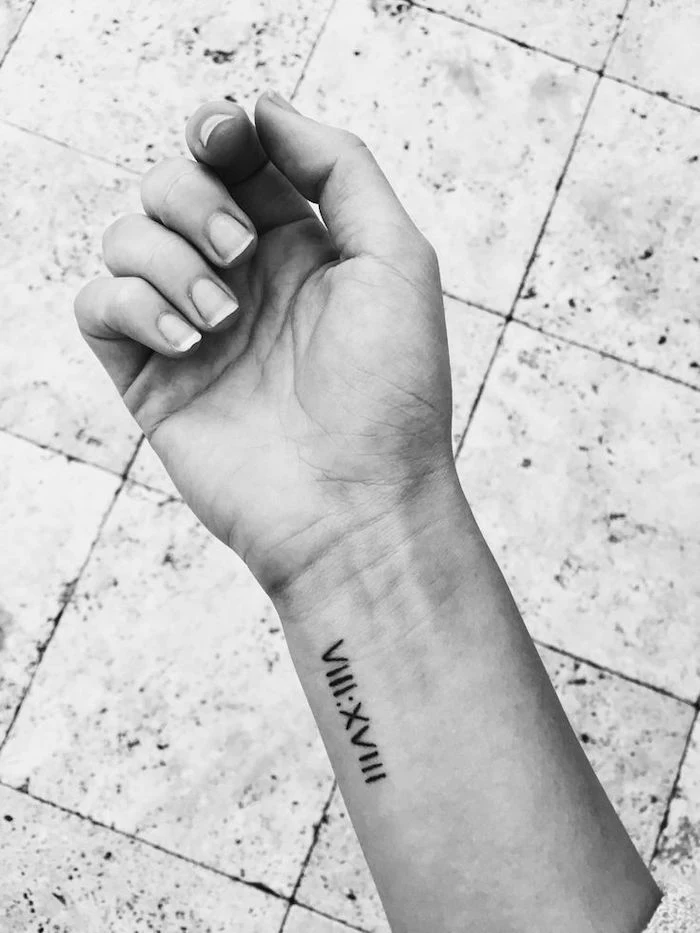
- A printed, large-font copy of the finalized Roman numeral.
- Your ID.
- Water and a sugary snack to keep your blood sugar stable.
- Comfortable clothing that provides easy access to the tattoo area.
Being prepared makes the entire experience smoother and more enjoyable for both you and your artist.

